2014 EOY Trip Flight #5
I am back for a series of report on the 10 flights we took back in December 2014 for our end-of-year trip. It was a great trip with 4 new airlines, 5 new airports and 2 new cities. The routing was SIN-SGN-TPE-PVG-ICN, GMP-PUS-GMP, ICN-PVG-TPE-HAN-SIN. To visualize the route we took, please refer to the map at the start of the report.
While our plan was only to visit my relatives in Taipei, and spend 10 days in Korea, the routing of our flights became more complicated as we decided to give up the direct flights available, so as to go for cheaper tickets that will also allow us to fly more!
This is a list of all the other reports in this series.
2014 End-of-Year Trip to Taiwan & South Korea
Click Here 09/12/14, SIN-SGN, Vietnam Airlines VN650, A321
Click Here 09/12/14, SGN-TPE, Vietnam Airlines VN570, A321
Click Here 16/12/14, TPE-PVG, China Eastern Airlines MU5008, A330-300
Click Here 17/12/14, PVG-ICN, Shanghai Airlines FM827, B737-800
This Report 20/12/14, GMP-PUS, Air Busan BX8811, B737-400
Coming Soon 23/12/14, PUS-GMP, Air Busan BX8816, A320
Coming Soon 26/12/14, ICN-PVG, China Eastern Airlines MU5034, A321
Coming Soon 27/12/14, PVG-TPE, China Eastern Airlines MU5005, A330-200
Coming Soon 30/12/14, TPE-HAN, Vietnam Airlines VN579, A321
Coming Soon 30/12/14, HAN-SIN, Vietnam Airlines VN661, A321
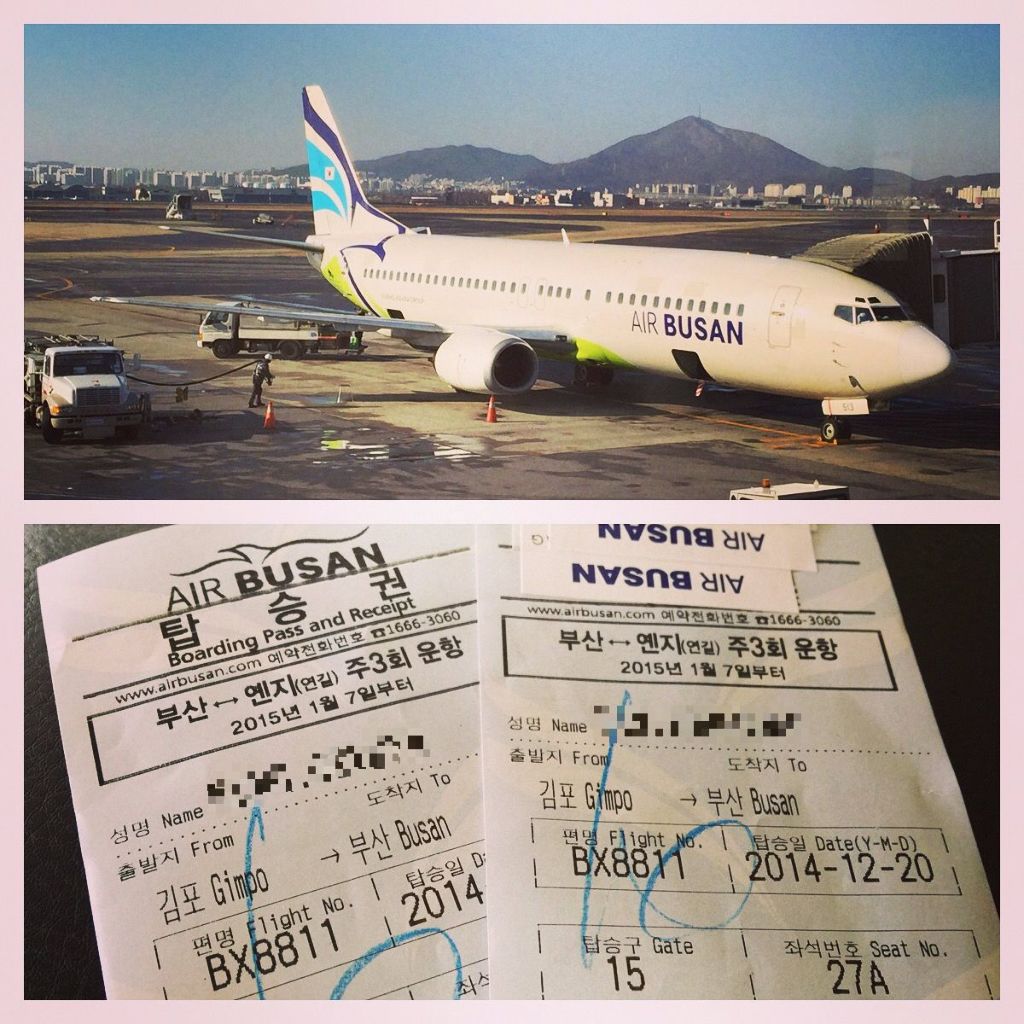
Air Busan BX8811
Aircraft Registration: HL-7513
Origin: Gimpo International Airport, Seoul, South Korea (GMP)
Destination: Gimhae International Airport, Busan, South Korea (PUS)
Date: Saturday, 20 December 2014
STD/STA: 1130h (UTC+09:00) to 1225h (UTC+09:00)
ATD/ATA: 1131h (UTC+09:00) to 1231h (UTC+09:00)
Estimated Duration: 00 hour 55 minutes
Actual Duration: 01 hour 00 minutes
Flight Distance: About 210 miles / 338 km
Here is the route map for this trip.
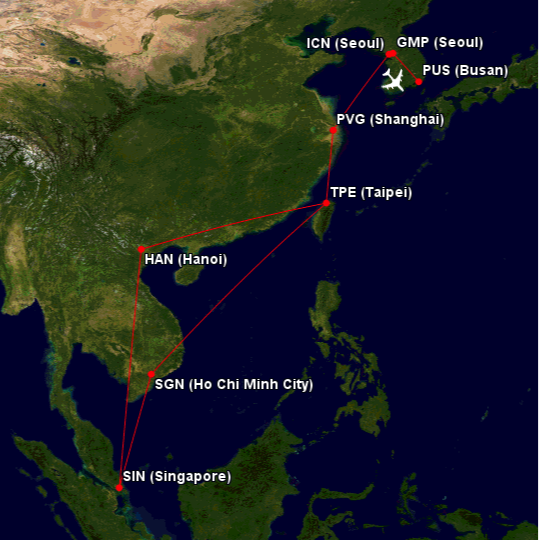
(Image credit: GC Map)
Over the past few years, the LCC industry has been growing fast within South Korea and right now they have several LCCs just within the country's small market; Air Busan, Jin Air, Jeju Air etc, just to name some.
On this route from Seoul to Busan, we could choose between Korean Air and Air Busan. Frequency of the flights was not an issue because we were basically spoilt for choices with flights departing for Busan every half an hour. We chose Air Busan simply because the round trip tickets were cheaper at about USD130 per person.
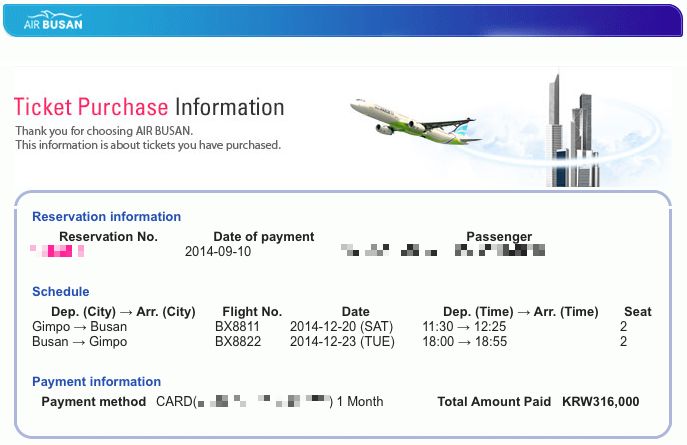
On our trip to Busan, we decided against an early morning flight so as to get more sleep. This explains the 11.30am departure from GMP. On the way back, we wanted to be back in Seoul for dinner at about 6pm.
The itinerary that I received from the airline included a 50% Busan Airport parking discount, which wouldn't be relevant to us for this trip.

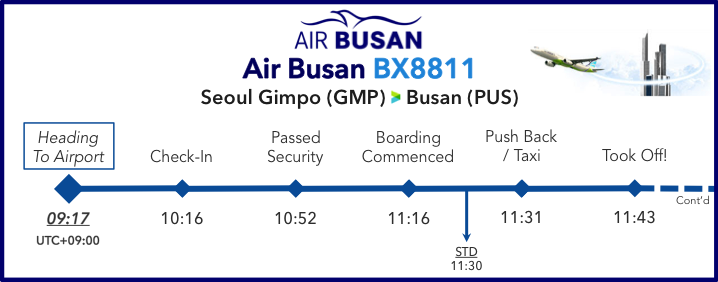
After a nice breakfast at our hotel, we checked out and headed straight to Gimpo Airport via the A'REX airport train.
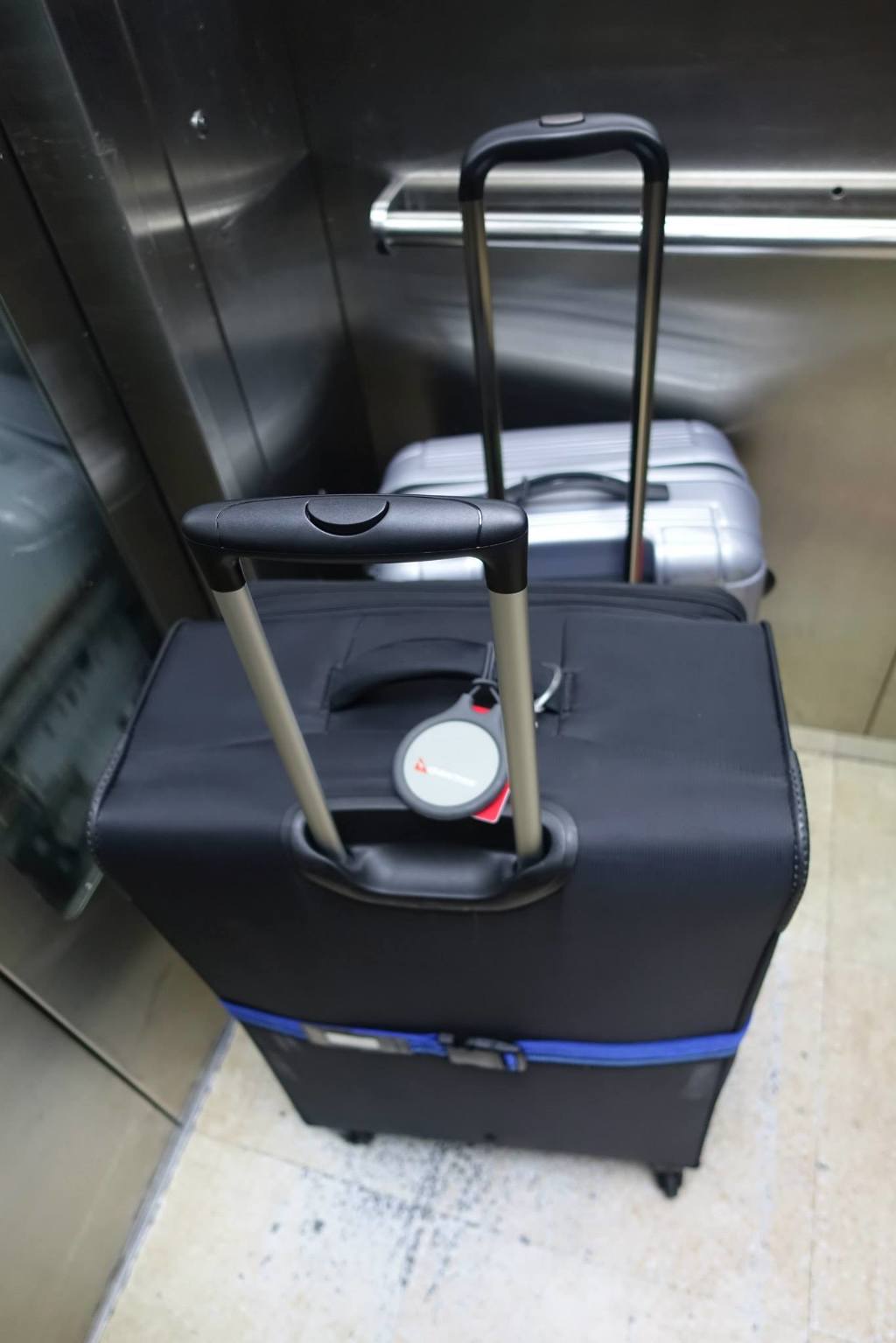
Before hopping onto an A'REX train, we needed to travel a few stations on Line 2. This is the cabin views onboard a Seoul Metro Line 2 train.
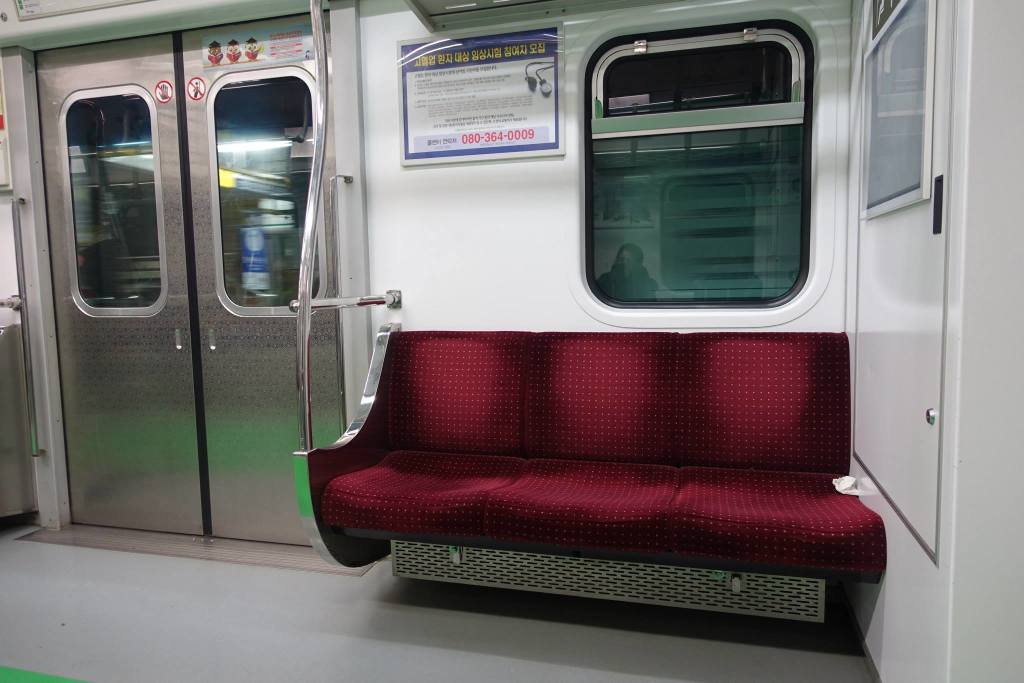
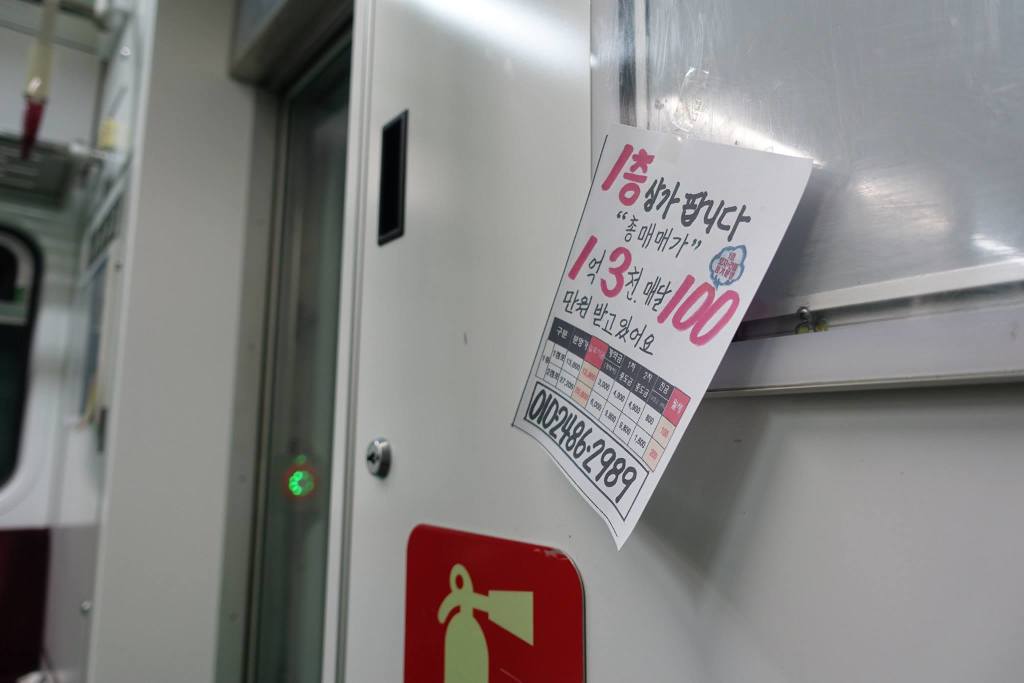
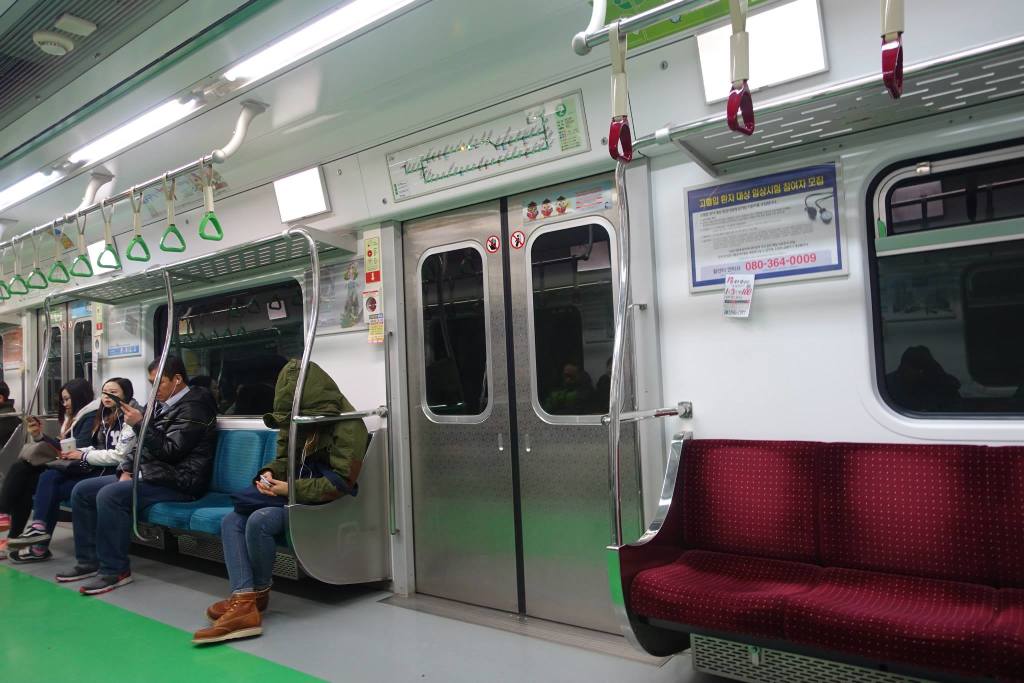
We got off at Hongik University Station for our transfer to the airport line, which was a long, long walk.
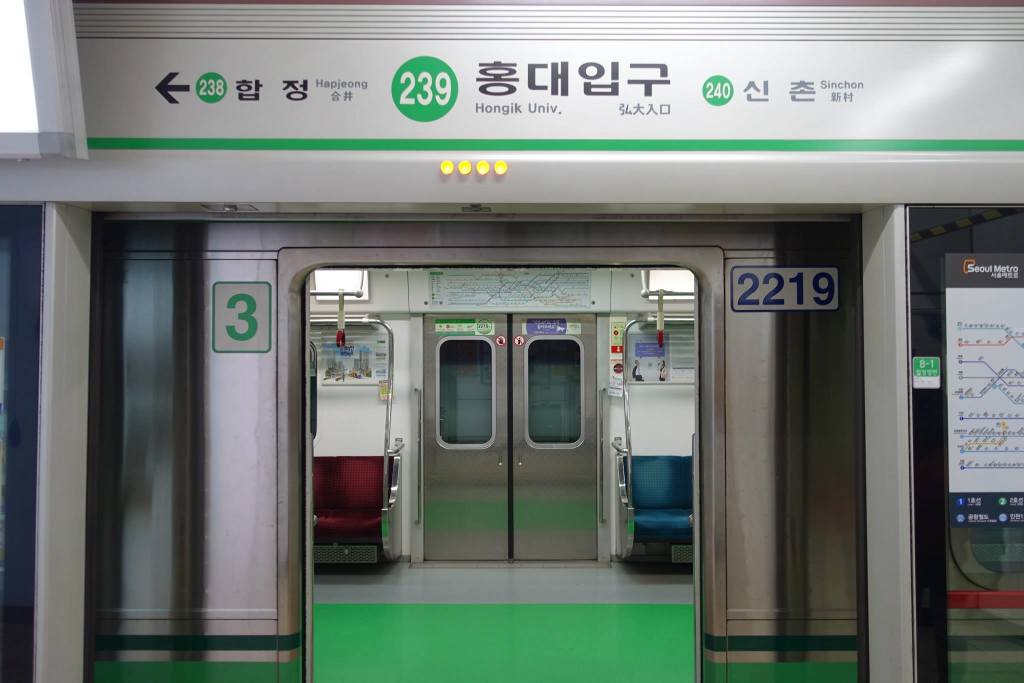
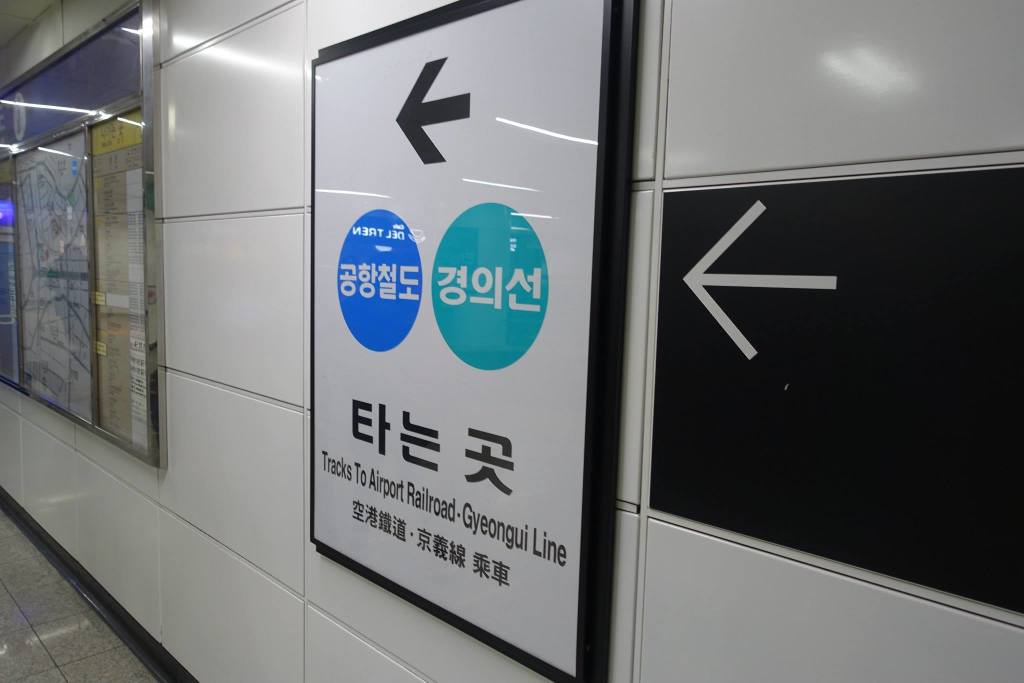

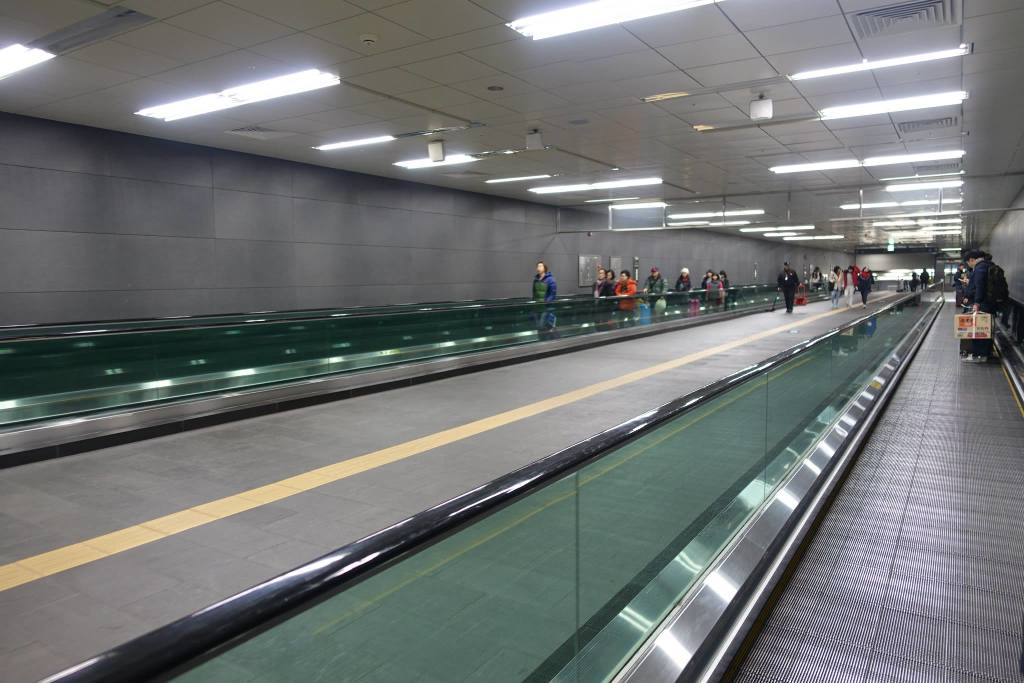
Finally, we were at the A'REX platform.

The detailed timetable for the airport line.

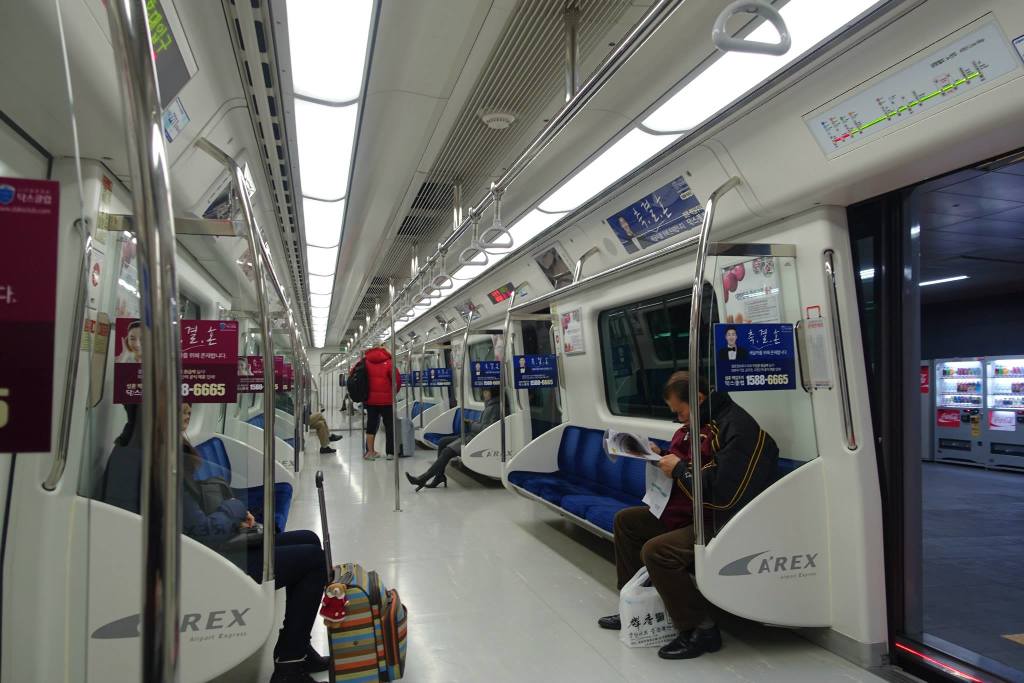
We arrived at Gimpo Airport around 10am, 90 minutes before our flight's departure.


Gimpo Airport is extremely accessible; apart from the airport line, it is also connected by Metro Lines 5 and 9. In terms of the airport's accessibility, it will be 10 points undoubtedly.
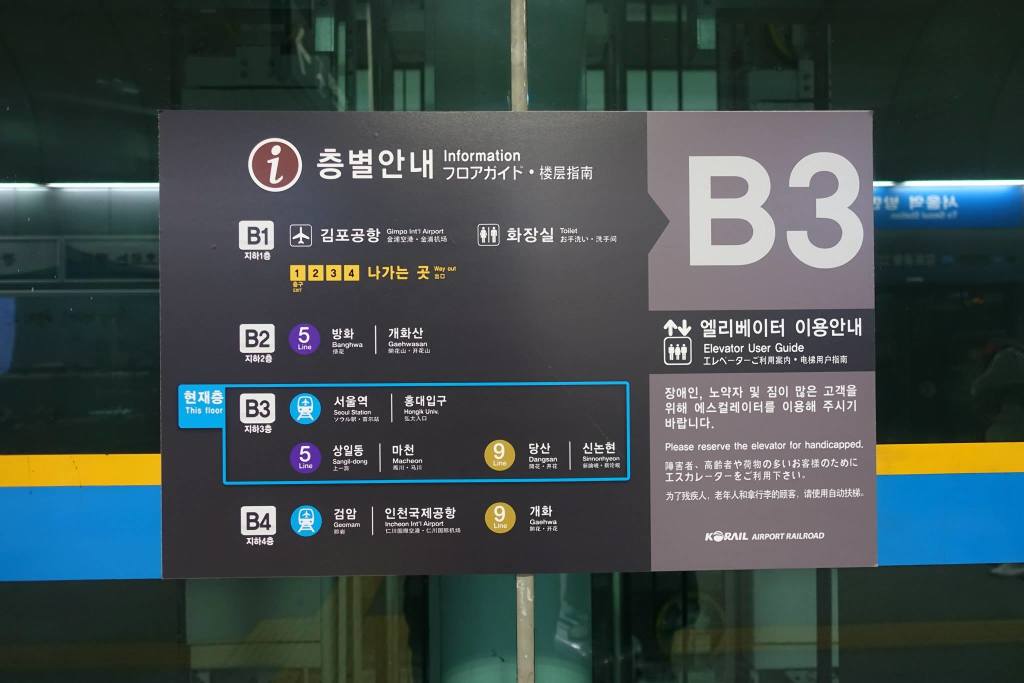

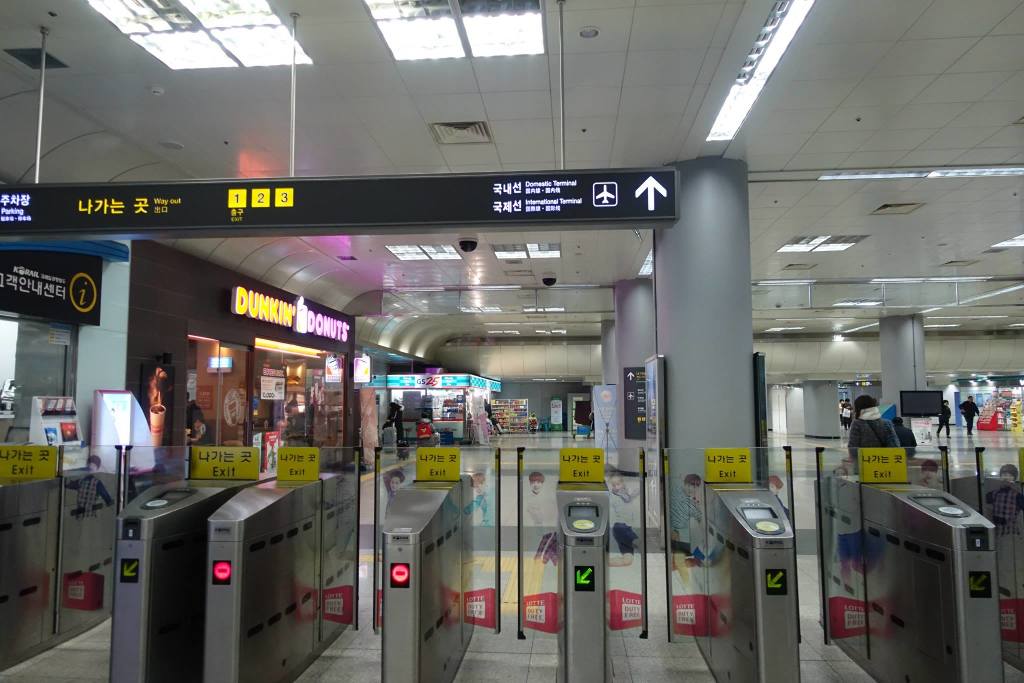
Following signs towards the domestic terminal.
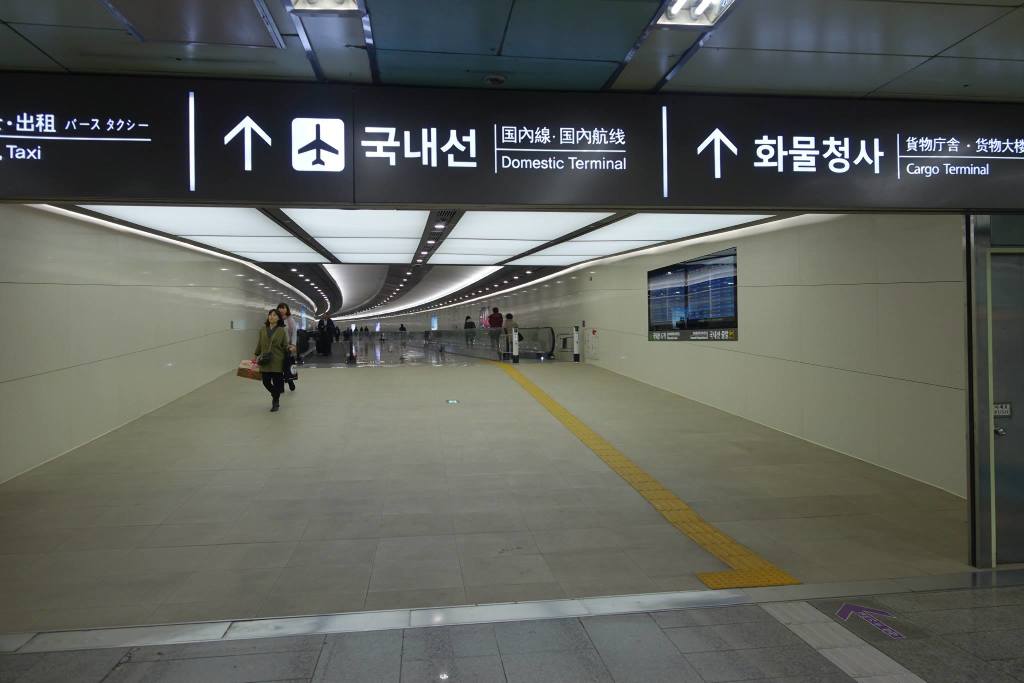


Almost all domestic flights were departing for or arriving from Busan/Jeju.

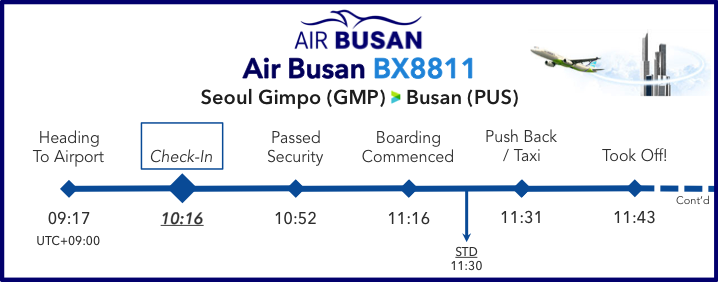
The check in hall was located at level 2. Immediately after stepping inside, we could feel that the terminal was extremely busy, and most of the airline counters were bustling with activities. (Maybe with Eastar Jet as an exception?)

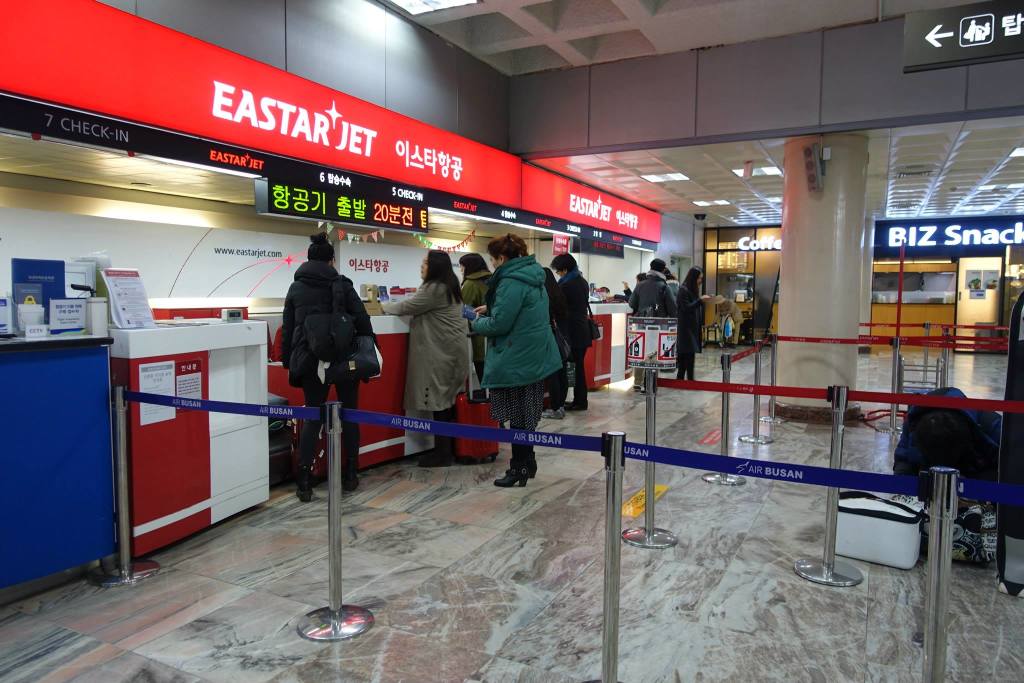
Check in was conducted in an efficient manner, and the moderately long queue moved fast. When it was our turn, we handed over our passports and itinerary to the agent, and she immediately started speaking (and asking questions) in Korean.
Neither of us understood Korean so we apologised and asked if she could repeat in English. Thereafter she became a little impatient and frustrated and merely said "Flight?"
I replied "8811 to Busan" and that was all of the conversation we had. She signalled us to place our bags on the weighing scale and handed us our boarding pass and receipt soon.
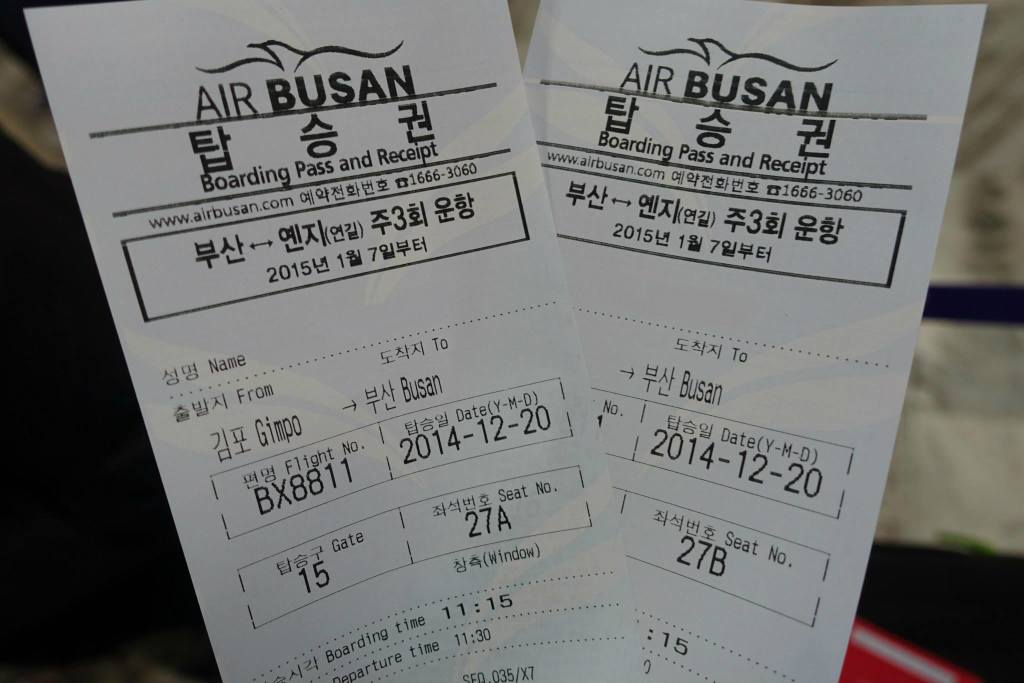
As we waited, we took some of these beautiful bag tags and attached them on our bags.
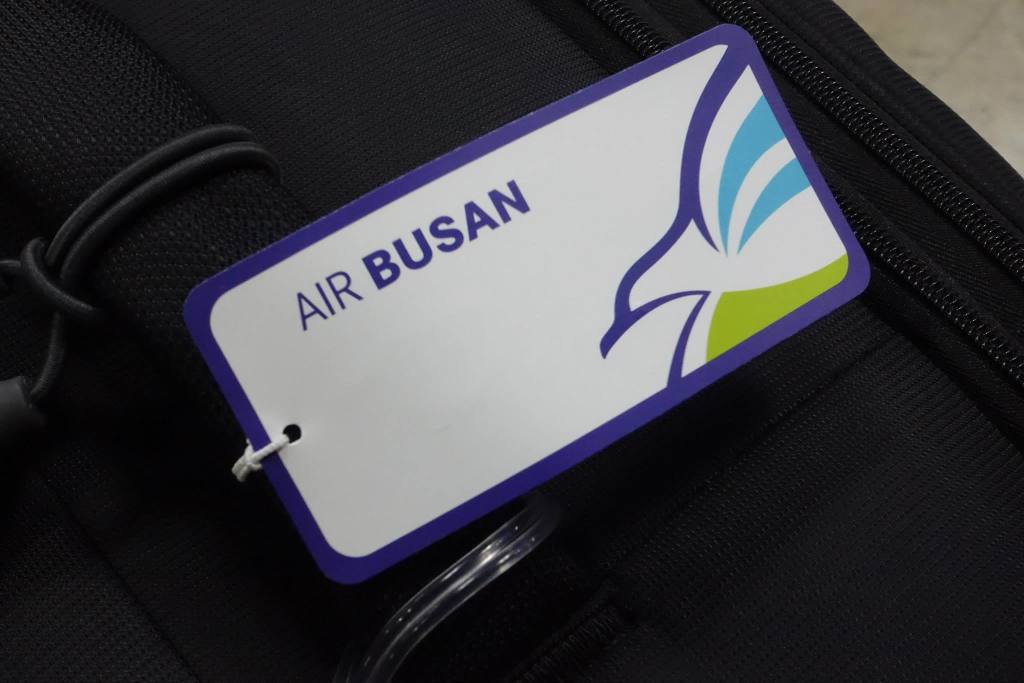
The departure hall was quite big for a domestic terminal. But that's definitely understandable given that the domestic market in South Korea is really quite well established. For example, there were 10 flights to Jeju between 11am and 12pm; isn't that amazing?

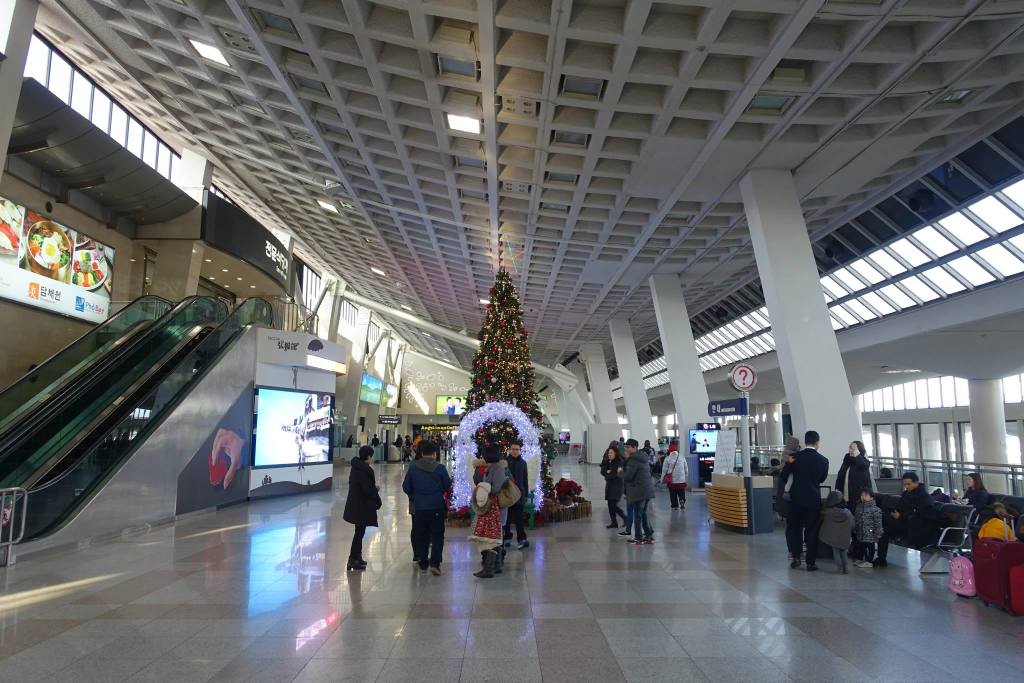
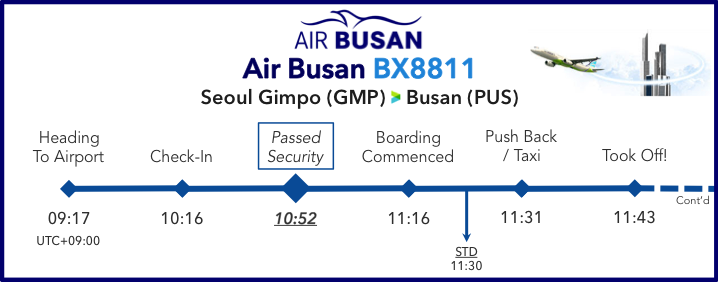
In the security line, we queued behind a group of Chinese tourists. While they obviously weren't speaking Korean, the airport security agent still blabbered all sorts of instructions in Korean. So all we foreigners could do was to look puzzled and then ignore them.
When it was my turn to pass through the detectors, the agent stopped me, pointed at my bag and again spoke several phrases in Korean. I replied "sorry?" and he said "water" after thinking for a while.
Ah! I totally forgot about that full bottle of water in my bag. Now I had to finish drinking all of it before I can be released from security checks.
Despite the incident, the entire process was quick and we were airside in just a while. The departure FIDS shows two flight numbers for my flight: BX8811 and OZ8811.
This is a reminder that Air Busan is part of the Asiana Airline group and technically, it's possible to earn some mileage on such BX flights provided you book them on the OZ website. However, doing so was more expensive and I decided against it.
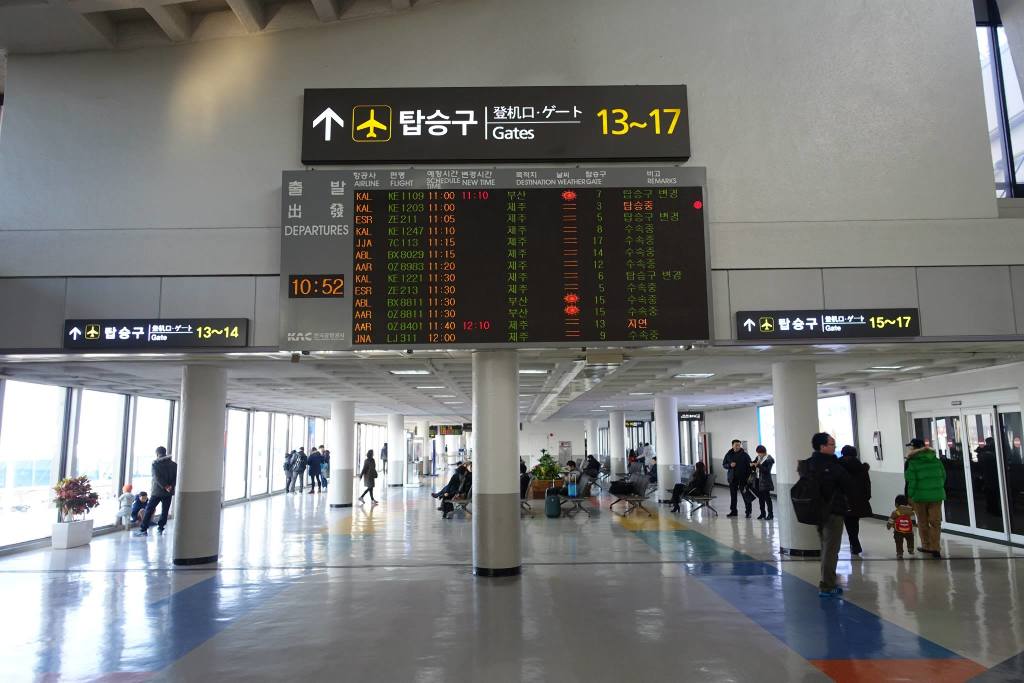
Here's the first aircraft I saw. An Air Busan A320 (S/N: HL7744) heading to Jeju as BX8029.

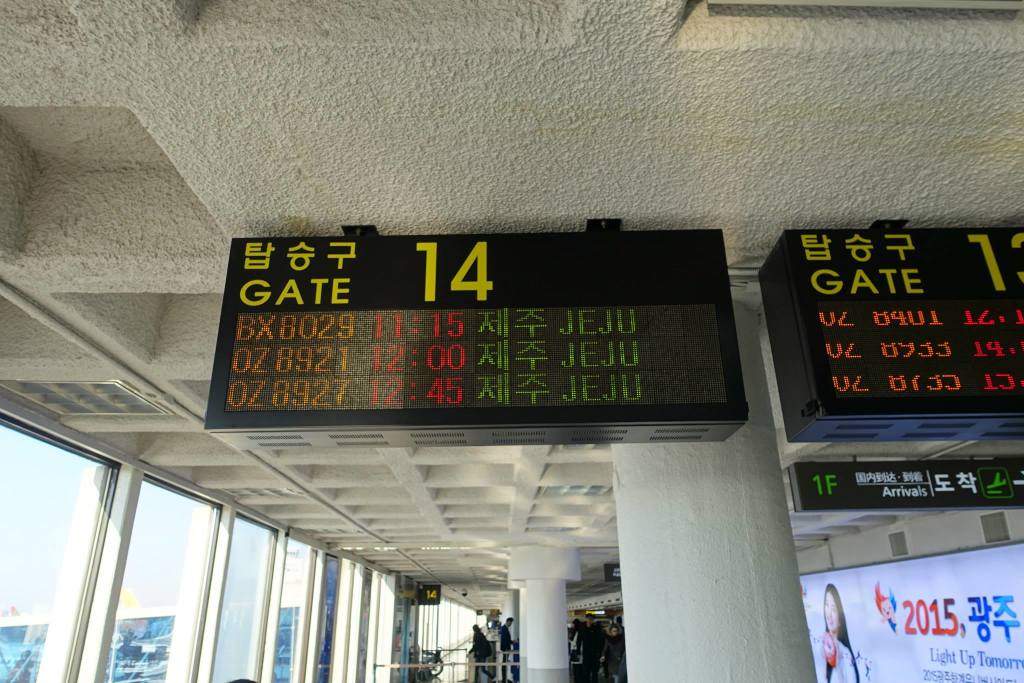
This B737-400 was our aircraft for that day. It was HL7513 and the age of the aircraft was about 17 years.
This will be my first time on a -400 after so many previous flights on -800s.
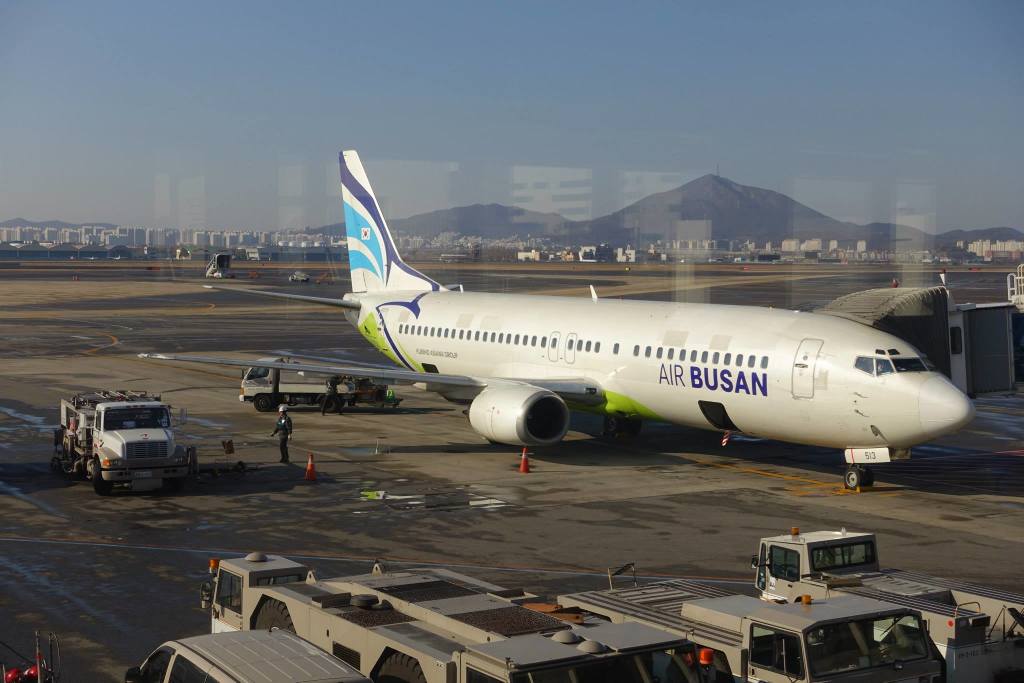

The airside area is not specifically designed to segregate arriving and departing passengers. So, when a flight arrives, the ground staff will block off an area for arriving passengers to leave the airside area.

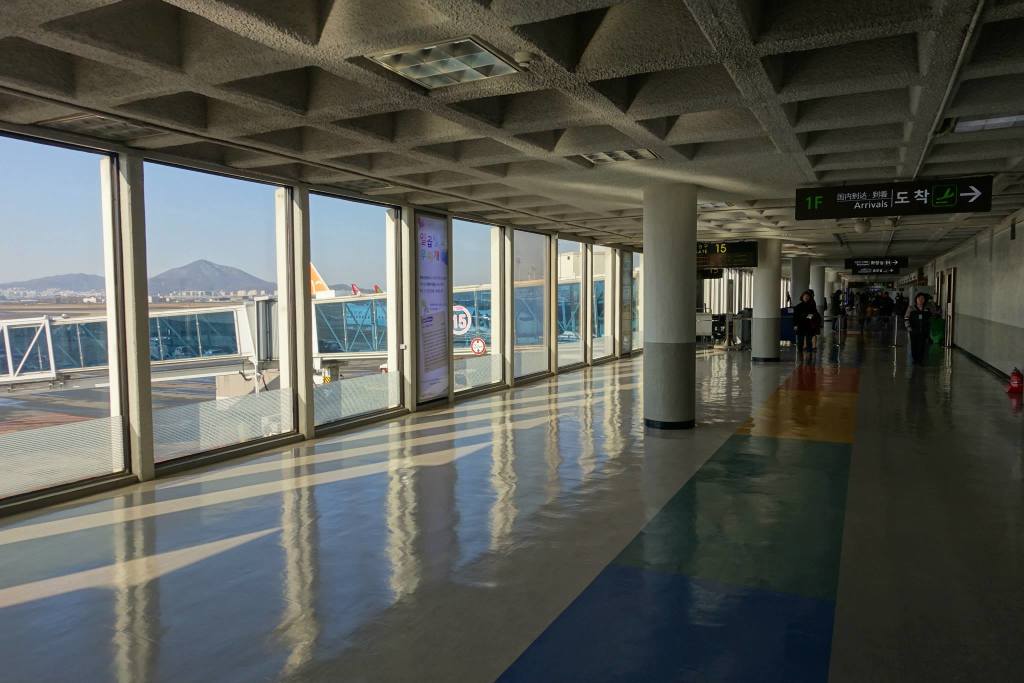
Arriving passengers will be able to go downstairs to the baggage carousel through this door.
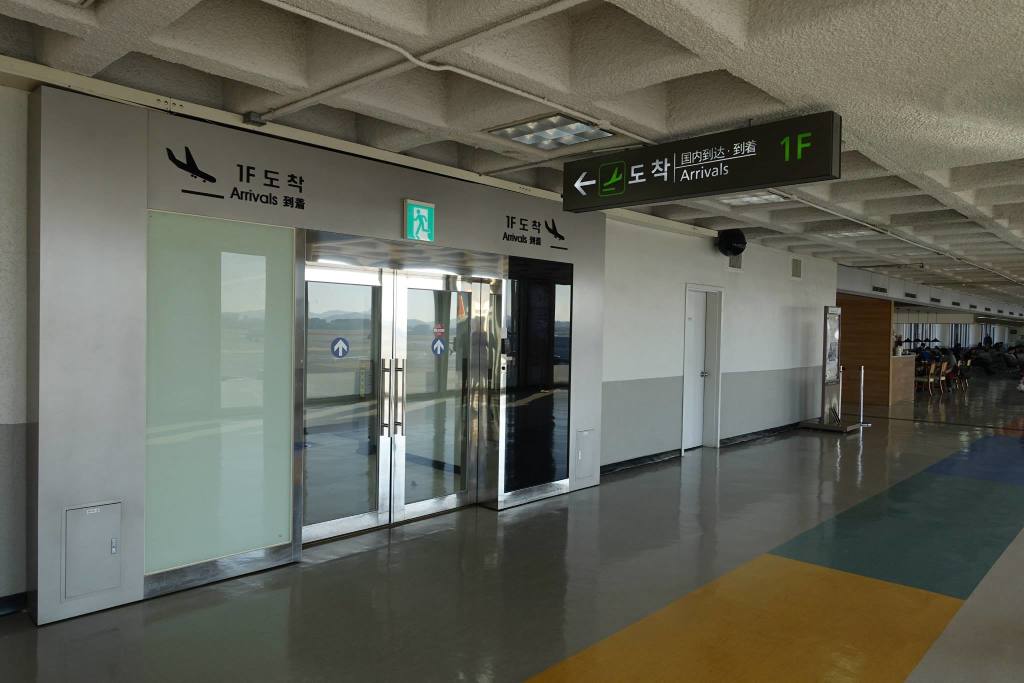
Another aircraft parked nearby was HL8260. This Jeju Air B738 used to be part of Virgin Australia's fleet.
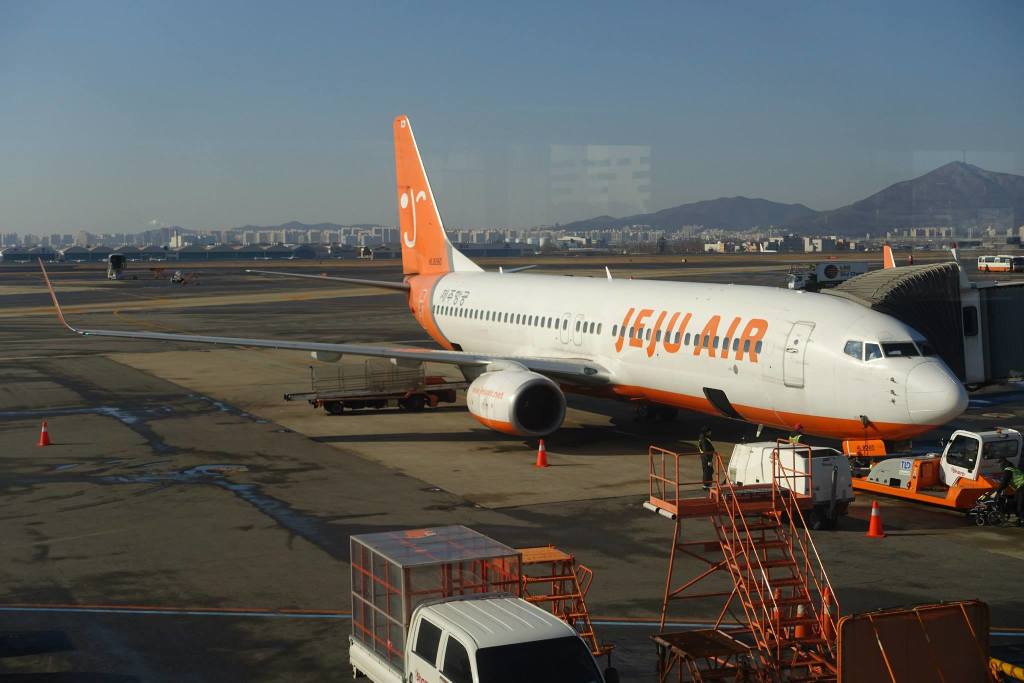
Another look at our aircraft to Busan.

And our departure gate information. At this point in time, the ground team was doing some final preparations before boarding for our flight commenced.
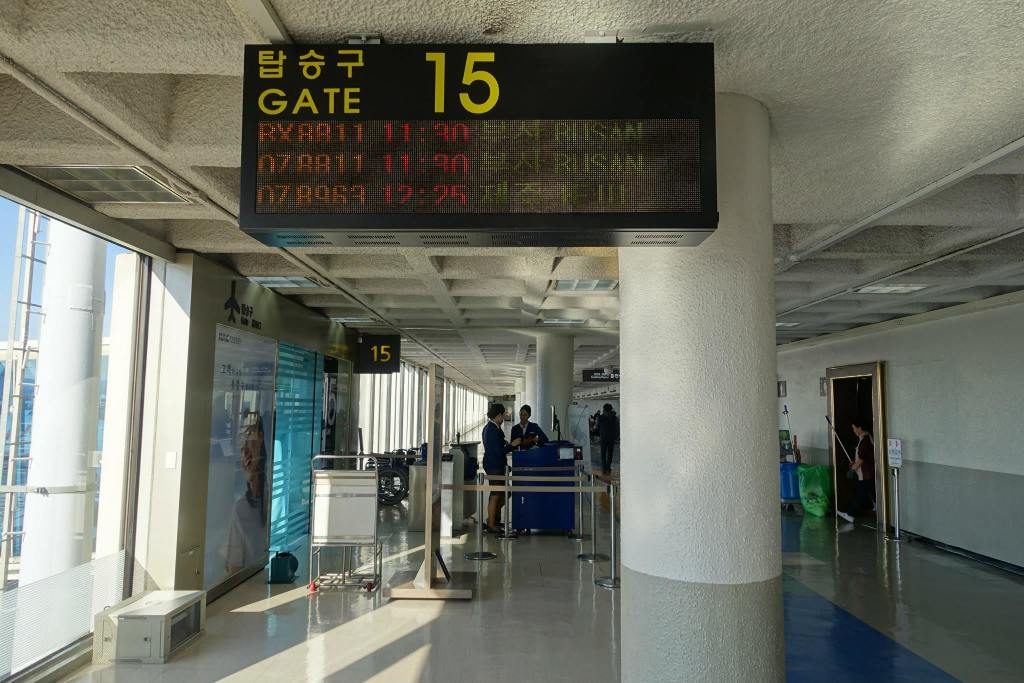
I took the time to walk around and snap more photos of Gimpo Airport's airside area.

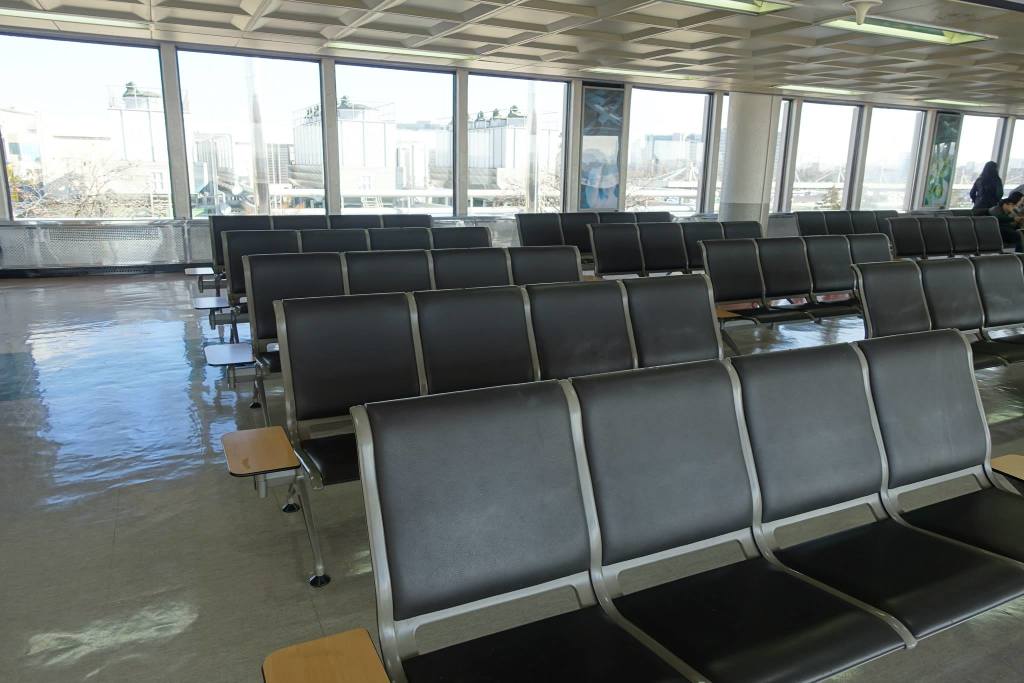
On the other side of the terminal were T'Way and Eastar Jet aircrafts bound for international destinations.
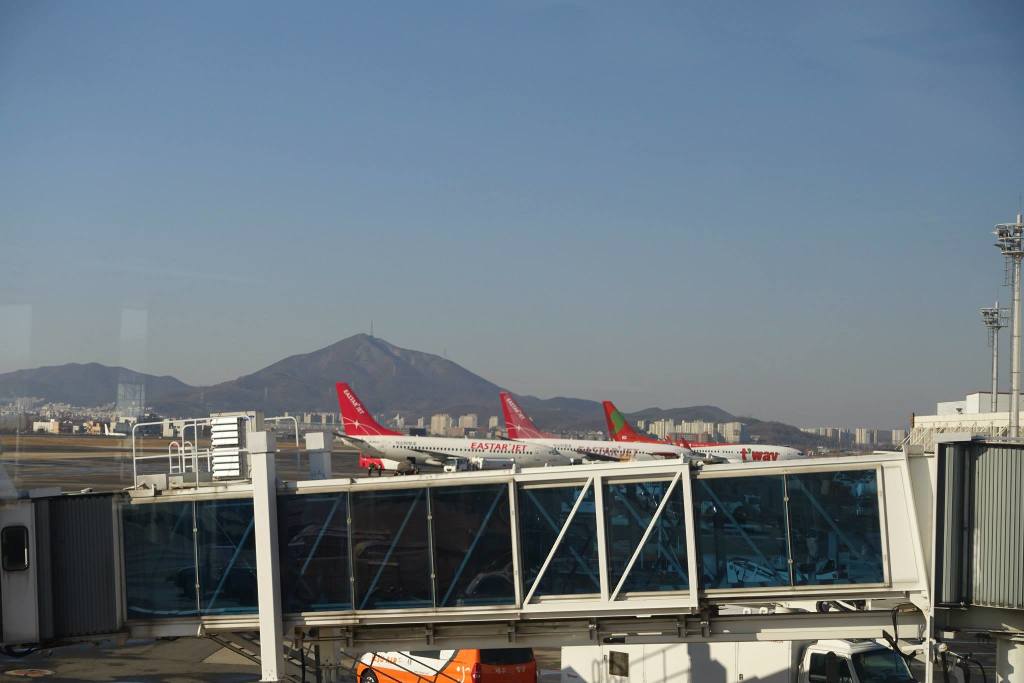
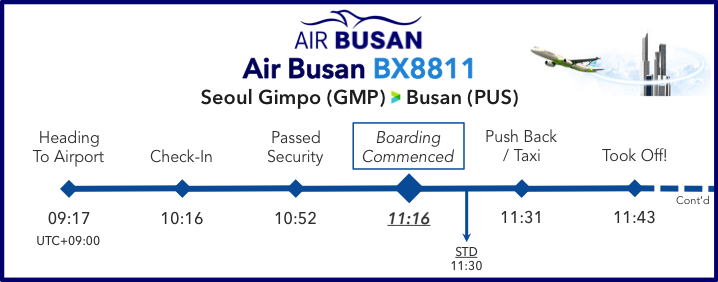
Boarding commenced about 15 minutes before departure.
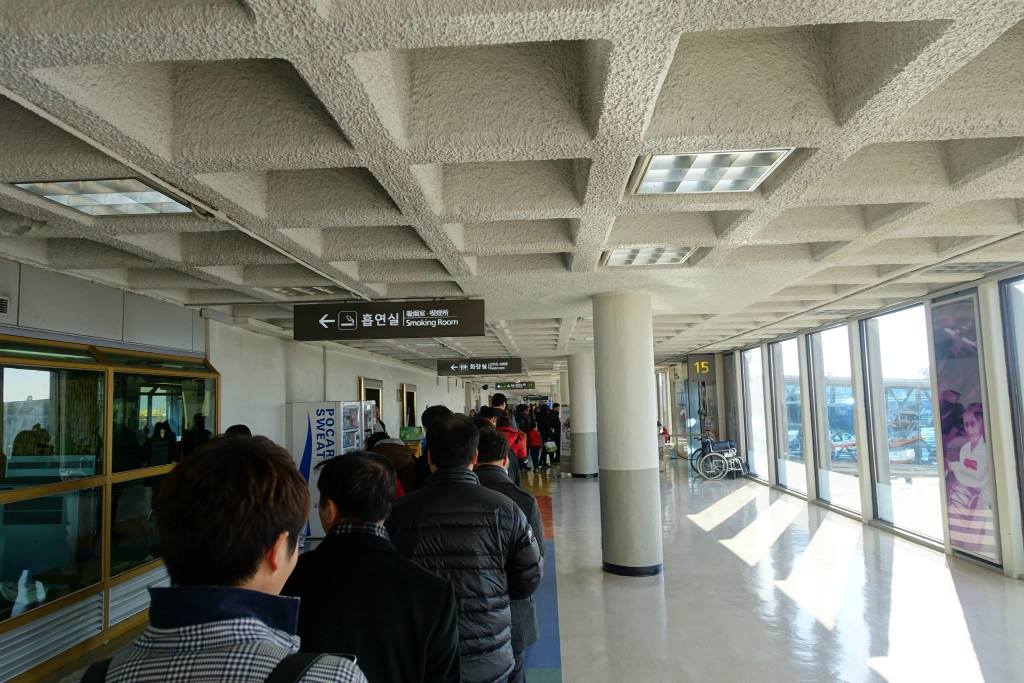
And we were on the aerobridge at about 11.16am.
Most of this flight's passengers seemed to be locals who were extremely used to flying domestically. Most of them seemed to be taking yet another bus ride instead of a flight.
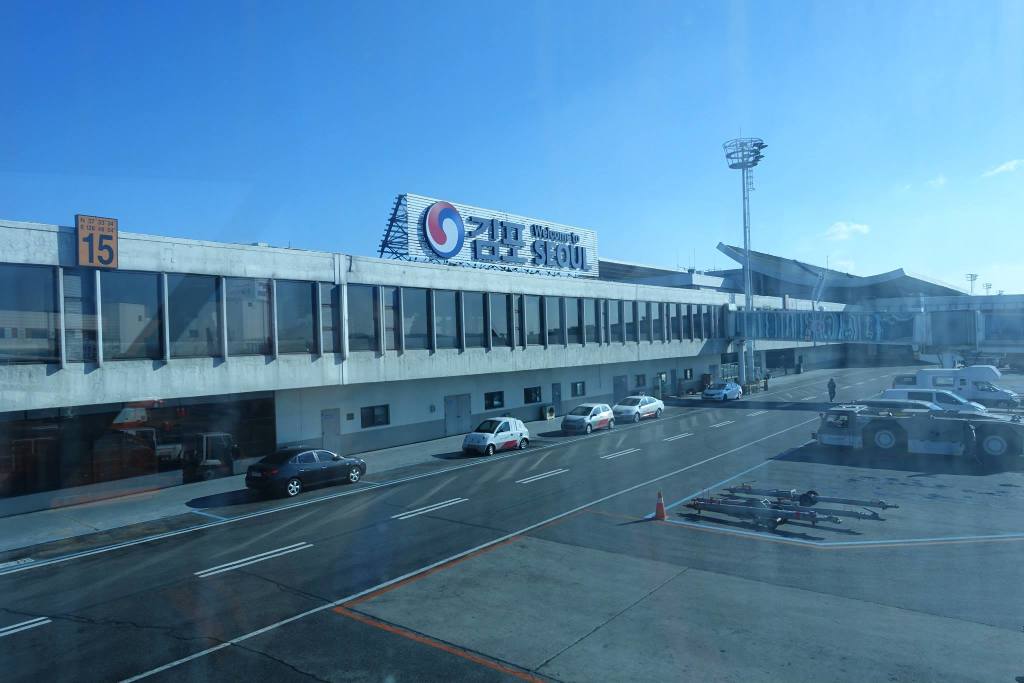
It only felt more like a flight's boarding process as we neared the aircraft's door.
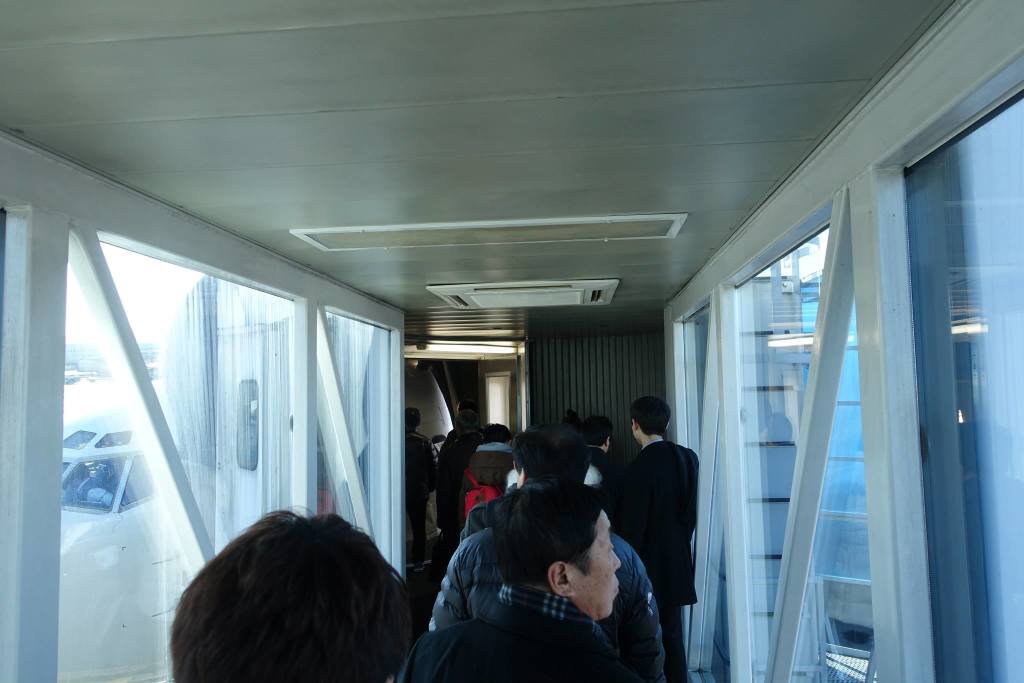
While Air Busan positions its business model more towards an LCC, 20kg of checked luggage were included with the most basic ticket and newspapers were even provided at the aircraft door.
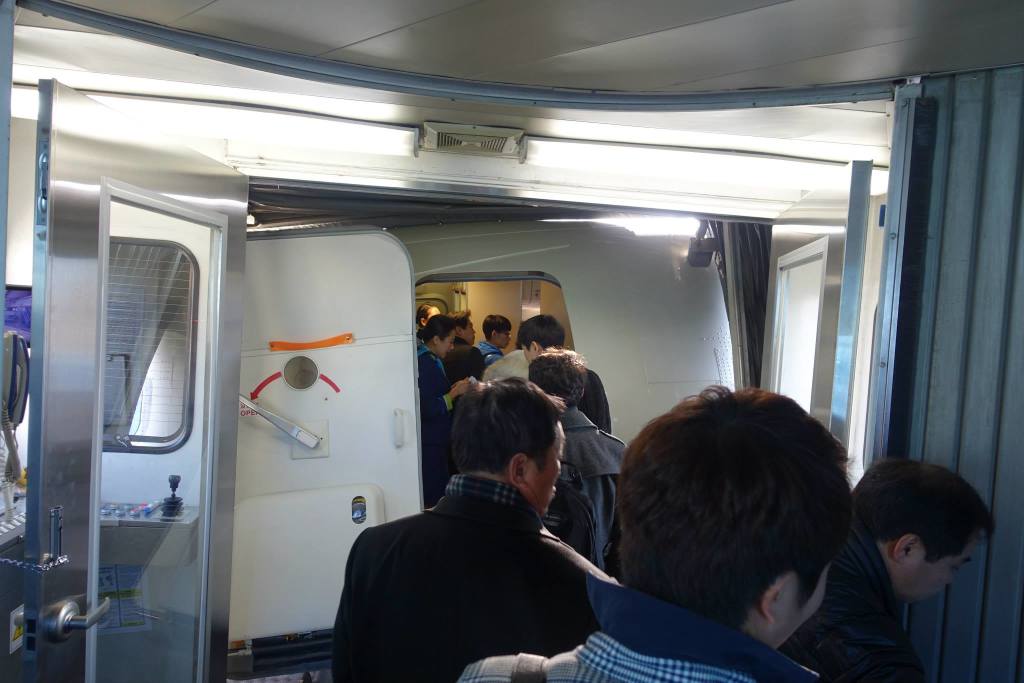
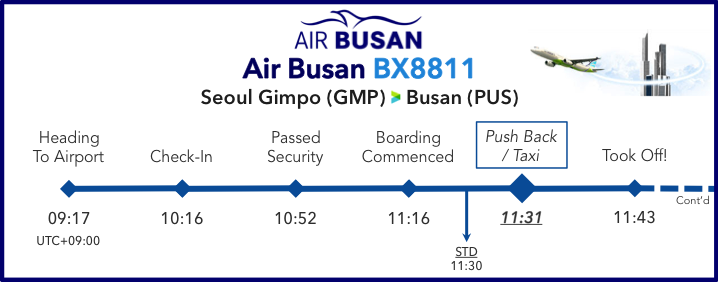
Even though the flight was packed, everyone found their seats and stowed their cabin bags without hassle. I was very convinced that the aircraft was filled with many frequent flyers.
It is also interesting to note that a few Jeju Air pilots were deadheading on this flight to Busan. All of them seemed to be on very good terms with the BX ground staff and cabin crew.
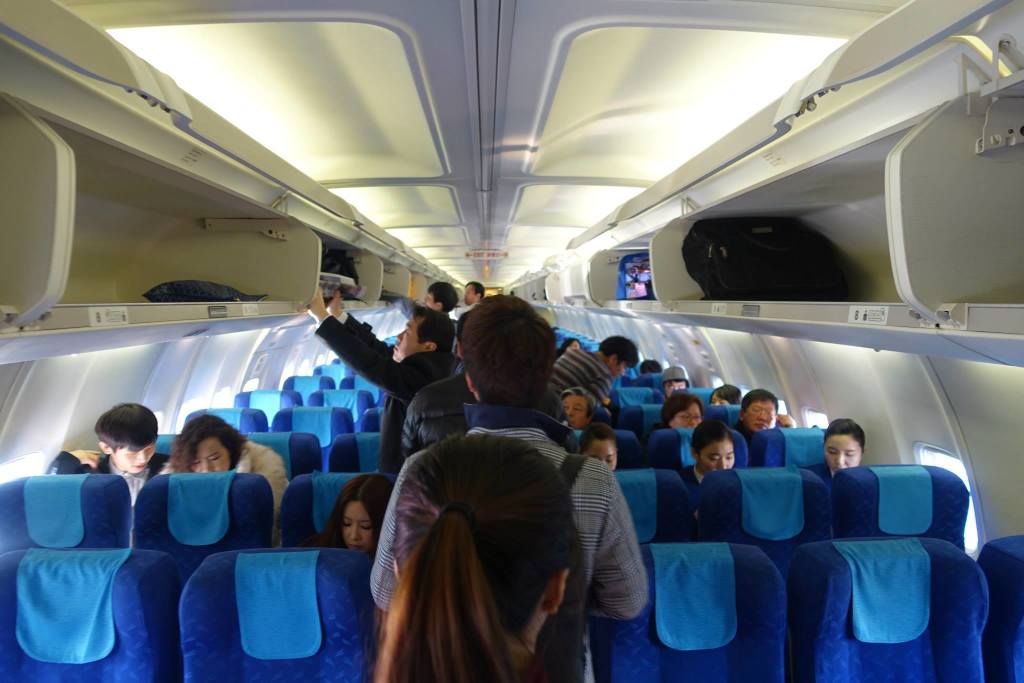
The entire boarding process moved on quickly and we were seated in just 5 minutes.
Here's a video of the boarding in progress.
11.26am, boarding was completed.
11.31am, push back began on time!
.jpg)
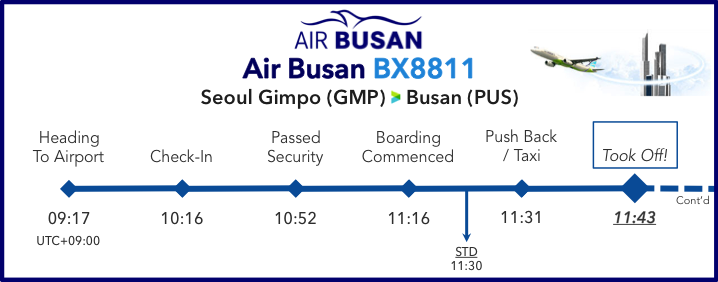
So far, the entire departure experience when travelling domestically in South Korea was extremely smooth. The entire process seemed more efficient than an Australian domestic flight (which I am quite used to). Now I am keen to experience an American domestic flight for the first time in a few months' time. (HNL-LAX-SAN, on AA in May 2016)
11.43am, took off from GMP!
11.47am, seatbelt signs switched off.
.jpg)
Let's now take a slightly closer look at the cabin of this B737-400.
Air Busan's aircrafts are all fitted with a single cabin. The economy class seats look like this and even seats in the last row had some recline.
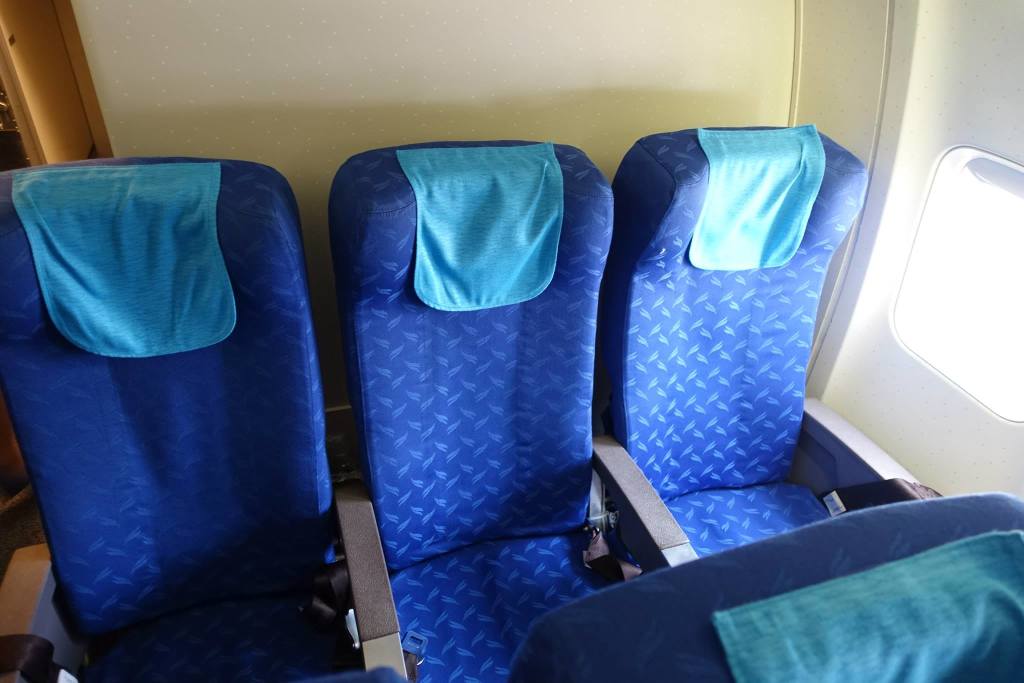
The seat back was very thick and it felt more comfortable than my previous experiences with Jetstar Asia, Tigerair Taiwan and V Air.
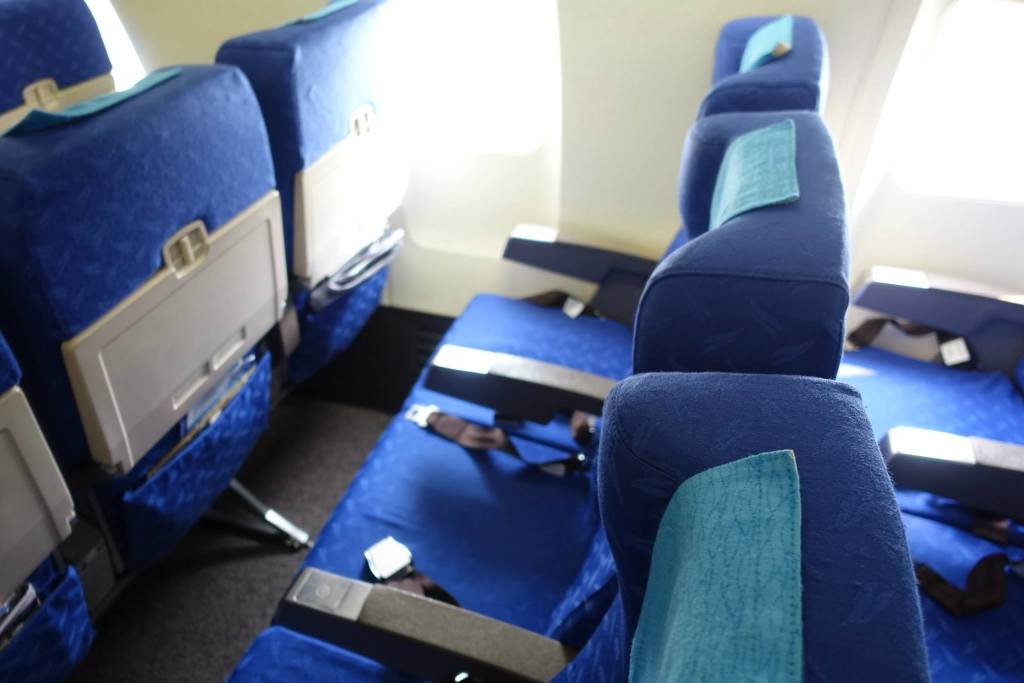
The seat pitch was officially said to be about 30-31" and it didn't feel tight for the short hop to Busan.
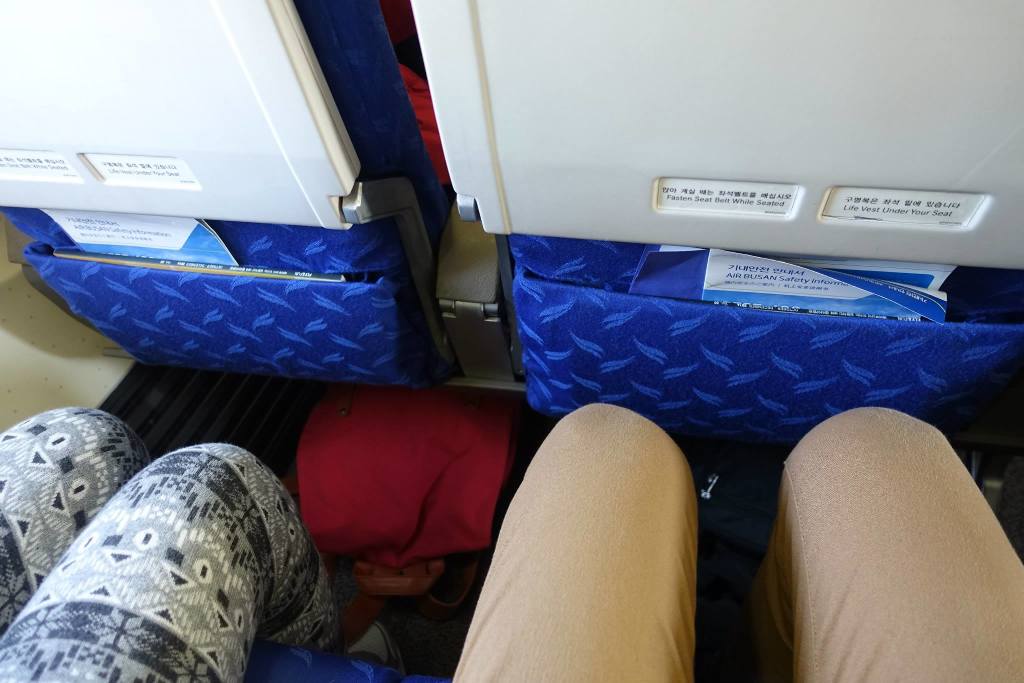
The size of the table was good too.
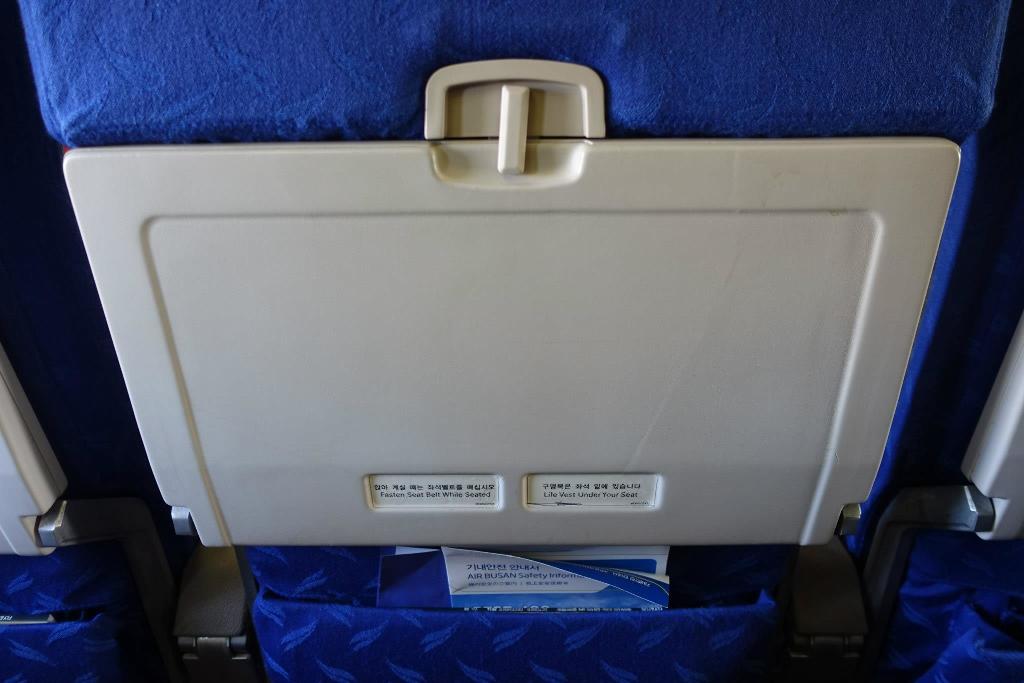
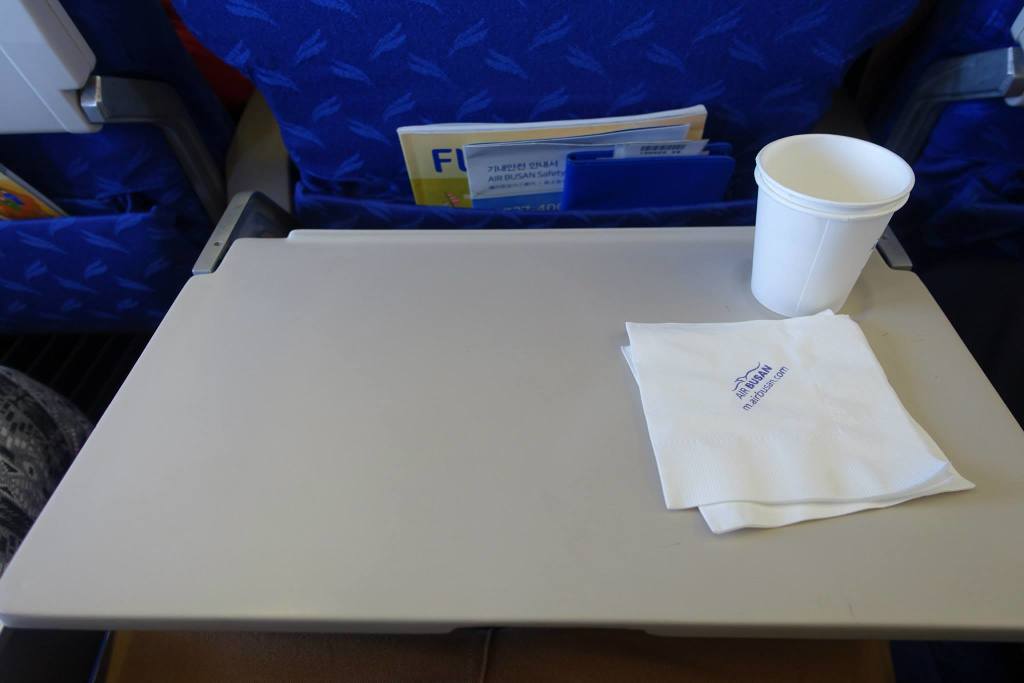
The overhead panel looked rather retro and included adjustable air vents.
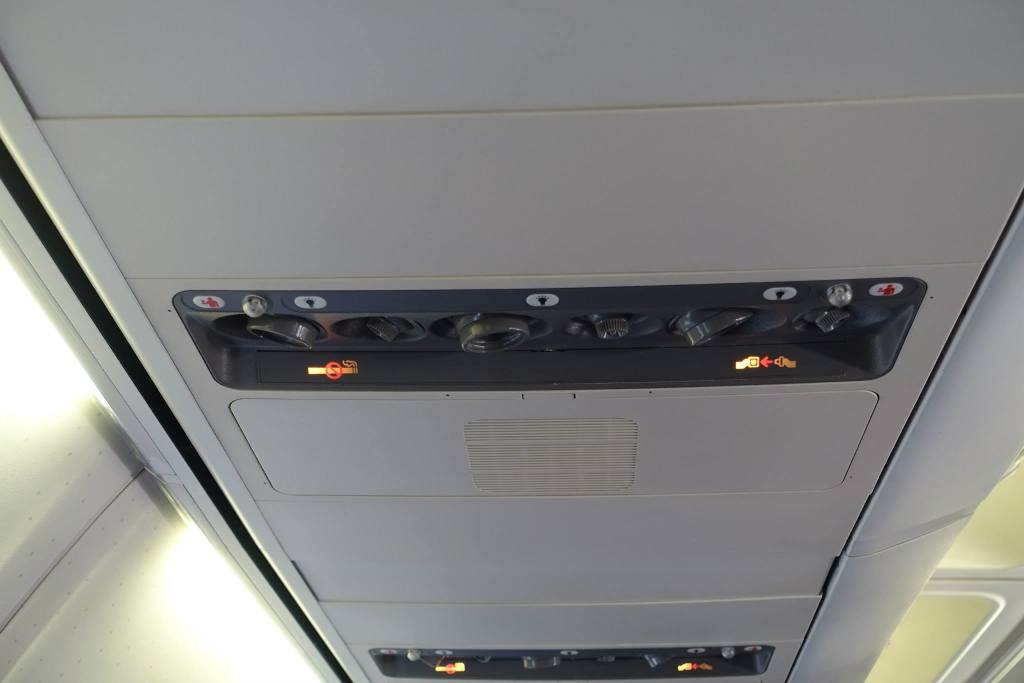
If I remember correctly, this B734 was not fitted with overhead screens so safety demonstration was conducted manually by the crew.
.jpg)
Obviously, we won't see anything close to the Boeing Sky Interior we see on newer B738s in this 17-years old aircraft.
The overhead compartments seemed rather tiny as well. And I am sure those compartments will be filled to the brim on international flights.
.jpg)
A quick tour of the lavatory.
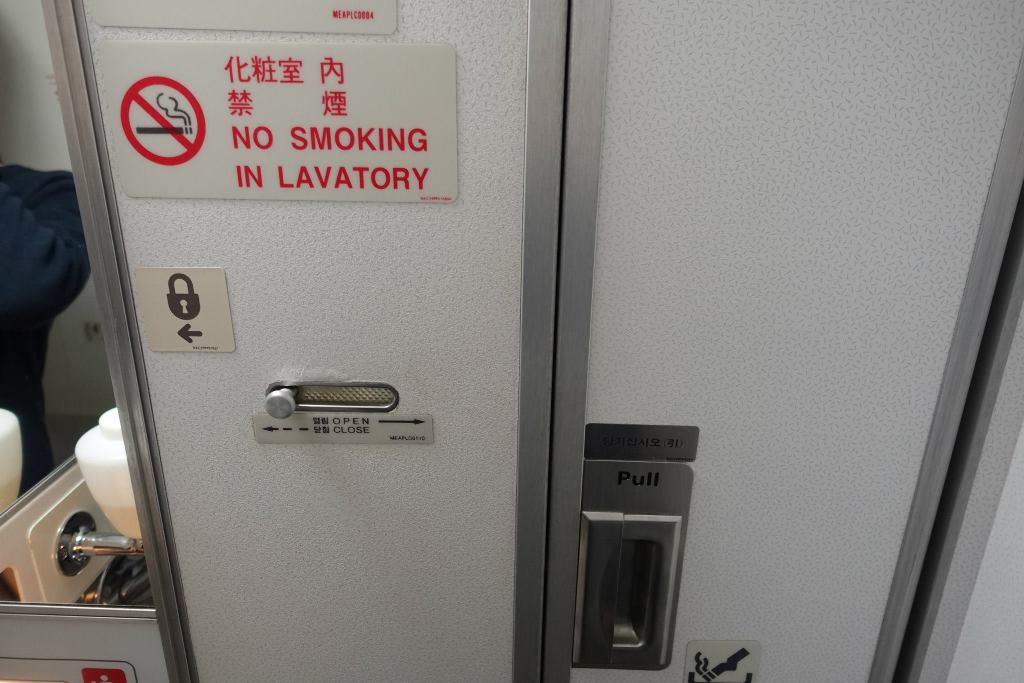
The wash basin was a bit on the small side.



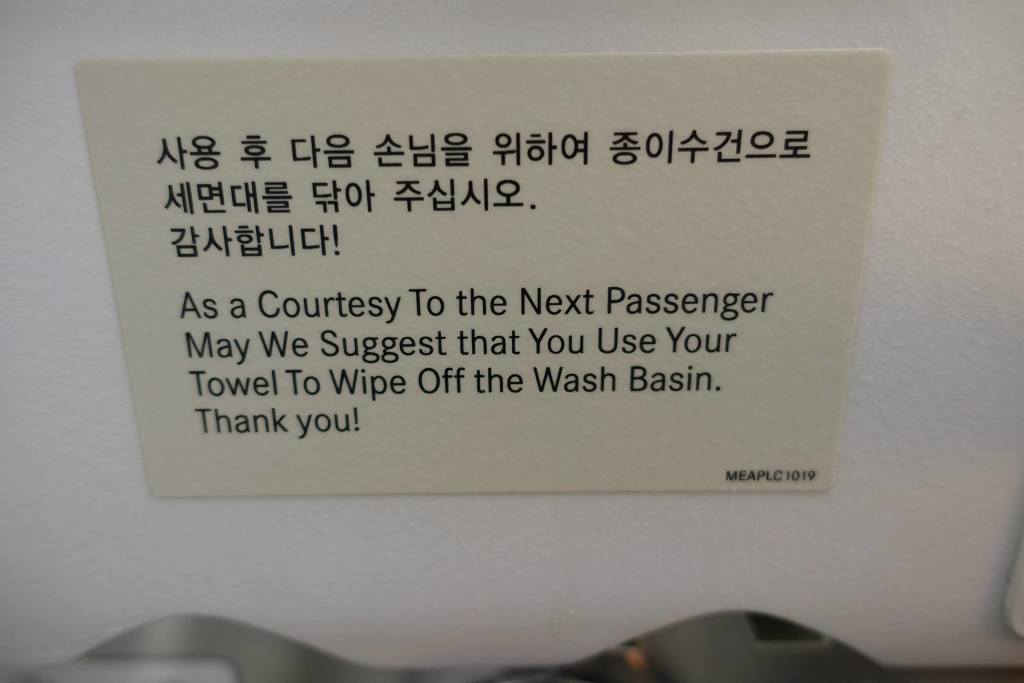
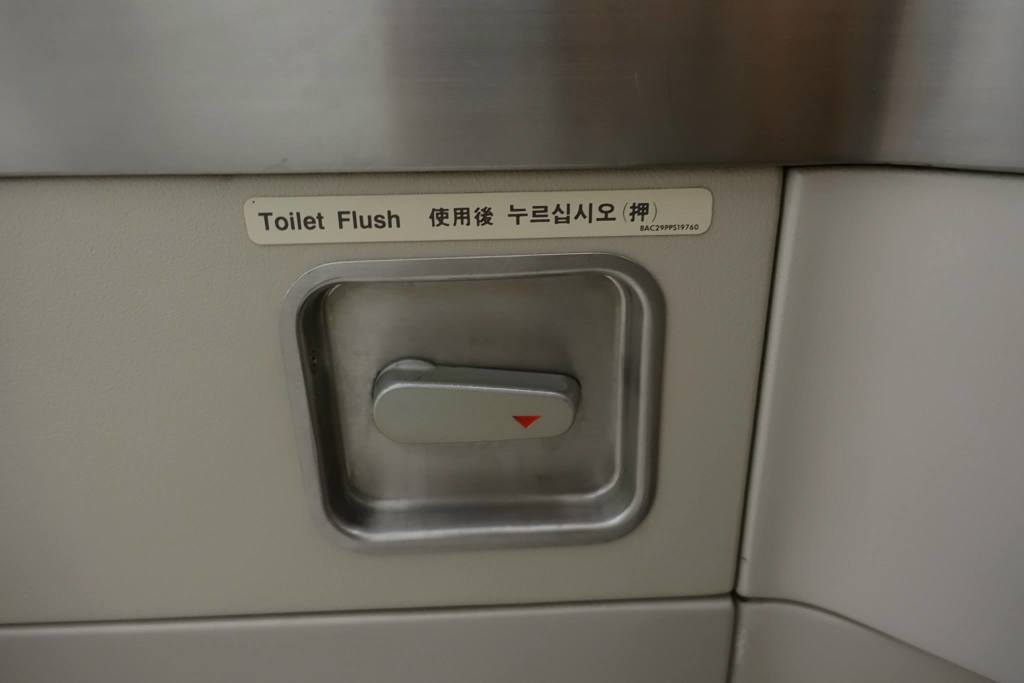
On such domestic routes, the galley wasn't very well-stocked and hence seemed to be really empty.
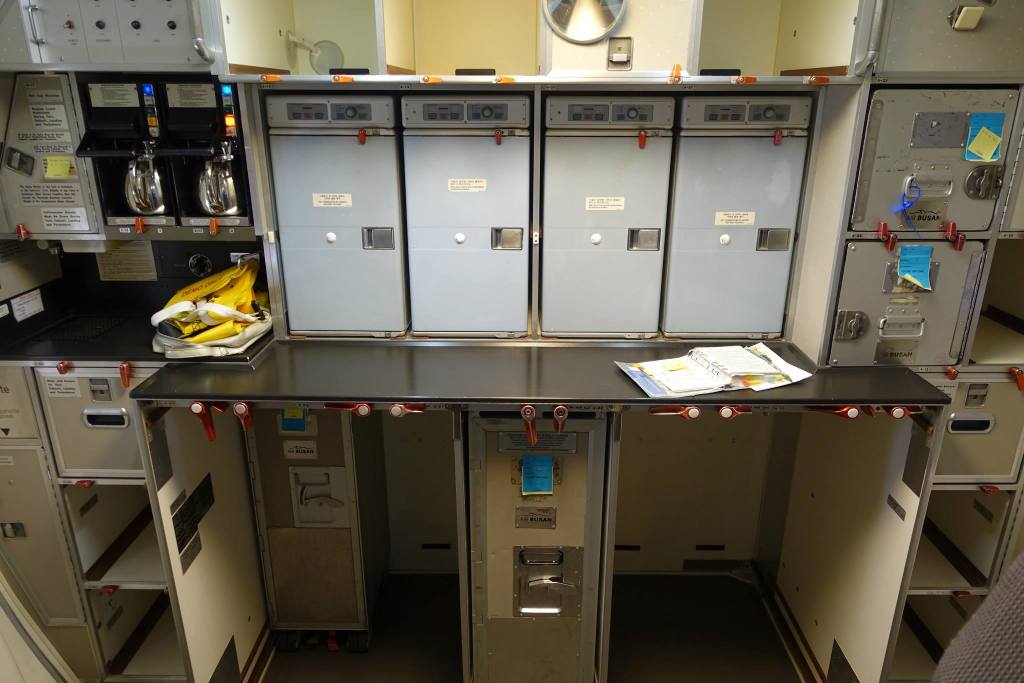
Back on our seats. The squarish windows give a hint of this aircraft's age as well.

That's all I have for the cabin photos. Let's point my camera to the views outside now.
These were the views of metropolitan Seoul soon after take off.
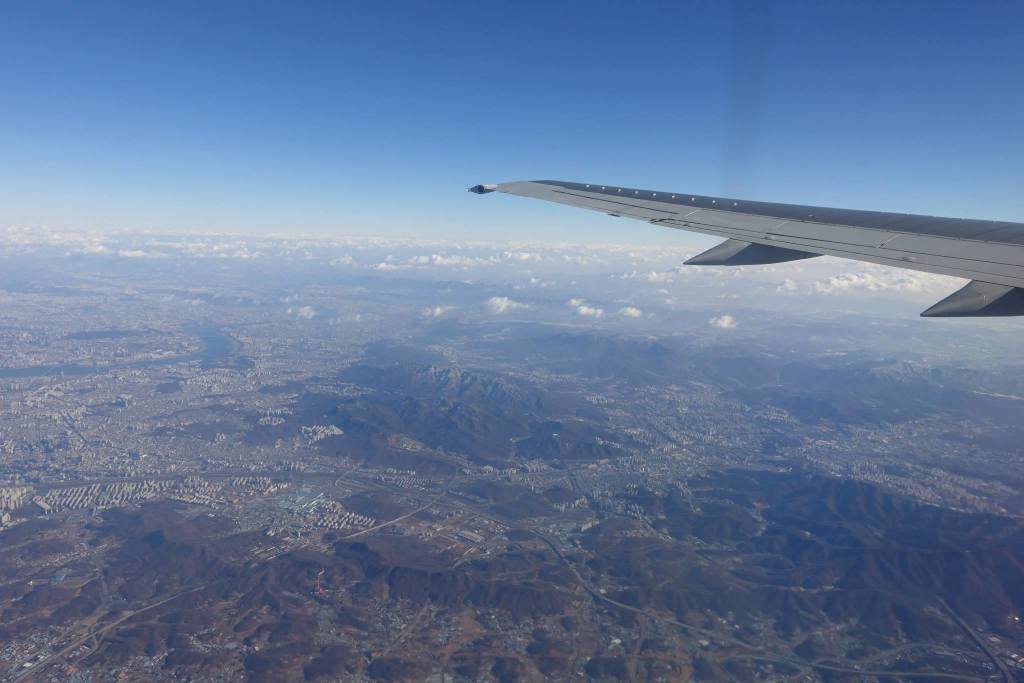
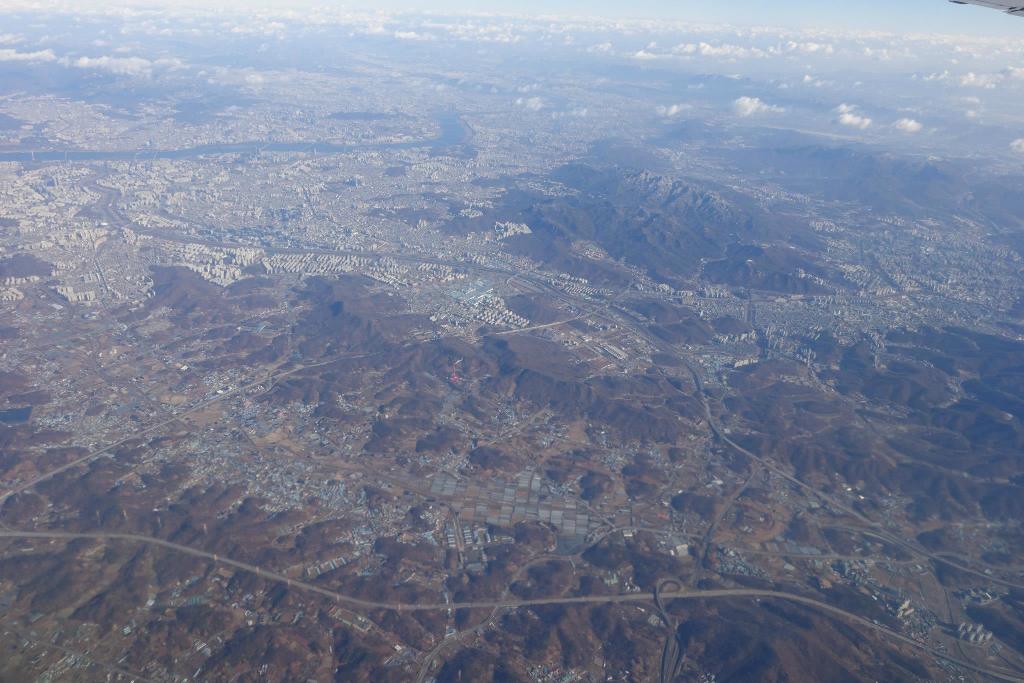
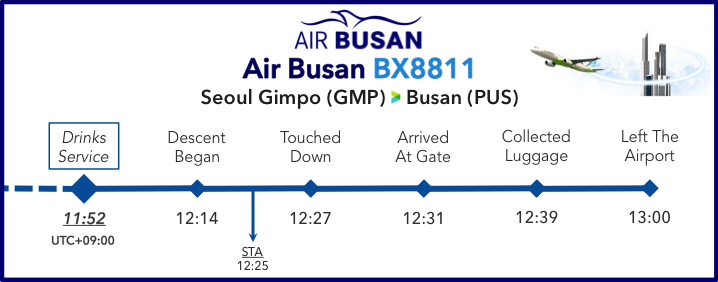
Soon after take off, complimentary drinks were offered - another deviation from the standard LCC business model.
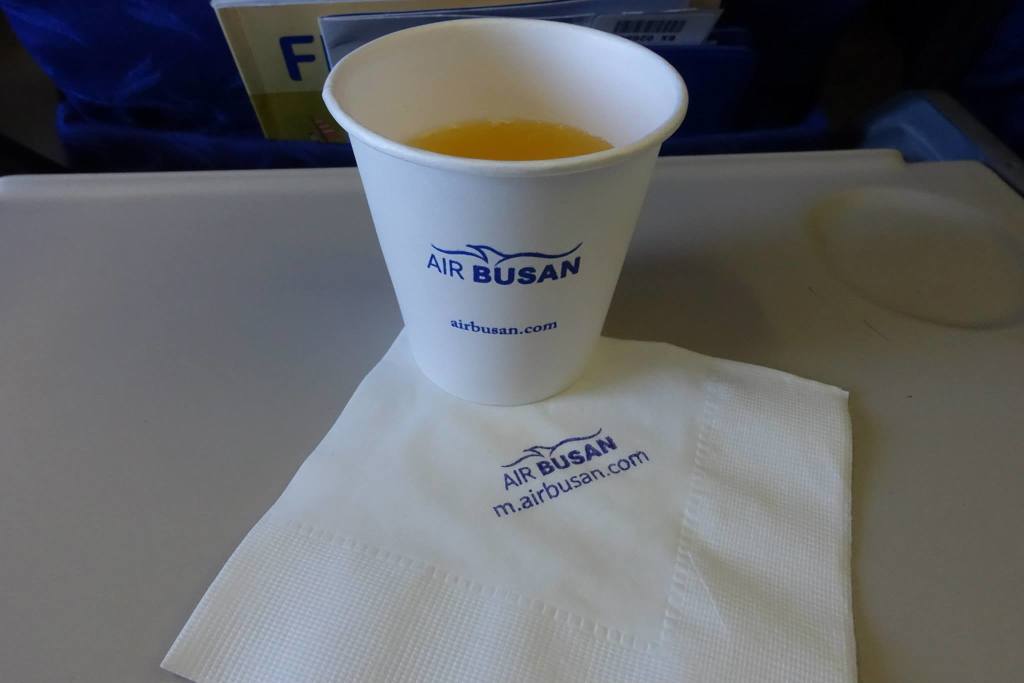
Enjoying a cup of juice with the gorgeous views outside. This is the beauty of flying.
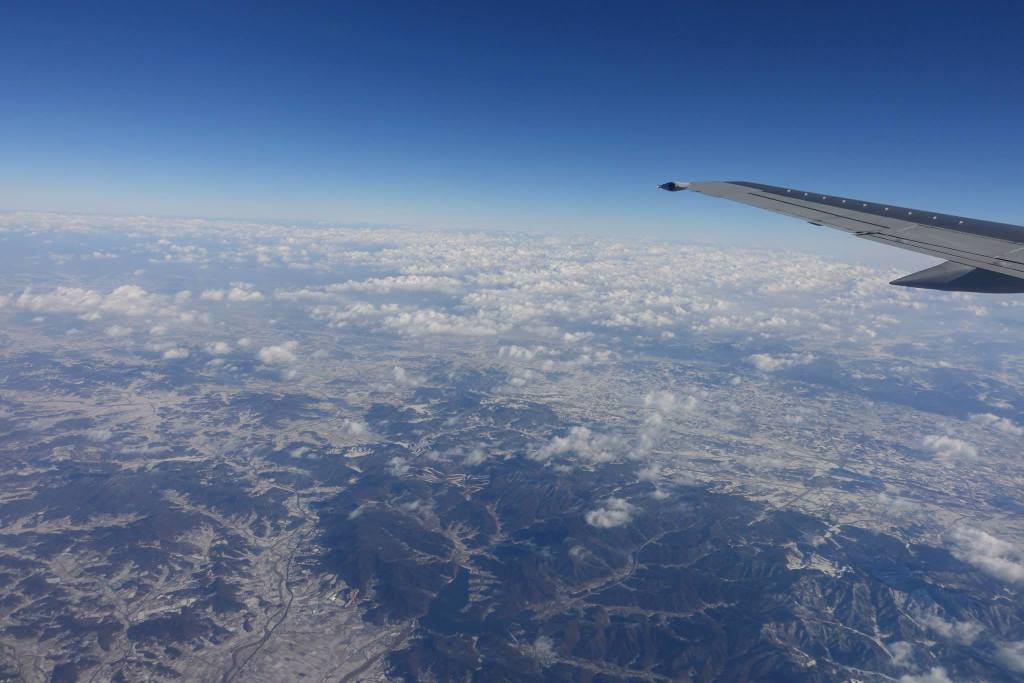
The extremely polite FAs continued the drinks service down the aisle.
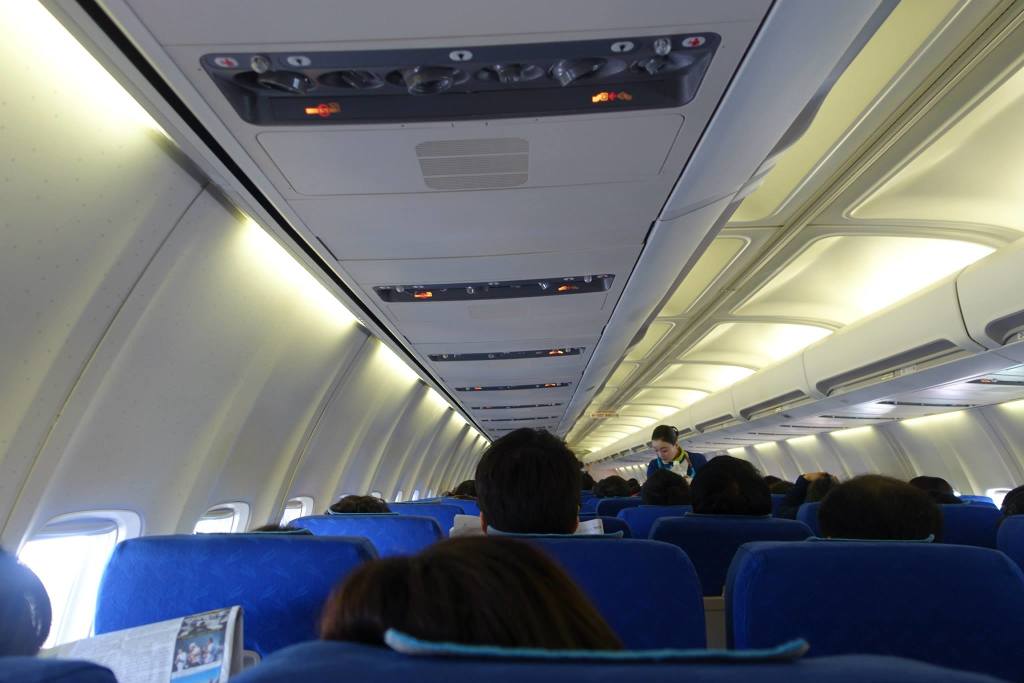
We were about halfway through the flight when the first officer came on the PA to give us the flight information updates.
(The English portion of the announcement begins at 0:44, I do recommend you to turn down your volume a little.)
Here’s what he said:
- Cruising at FL330 (?)
- Speed of 470mph (?)
- Total flight time of 45 minutes
- Estimated arrival time was 12.25pm
- Good weather en route
- Clear weather in Busan; 9 degree celsius
Now we turn our attention to the seat pocket contents.
The safety information card for this B737-400.
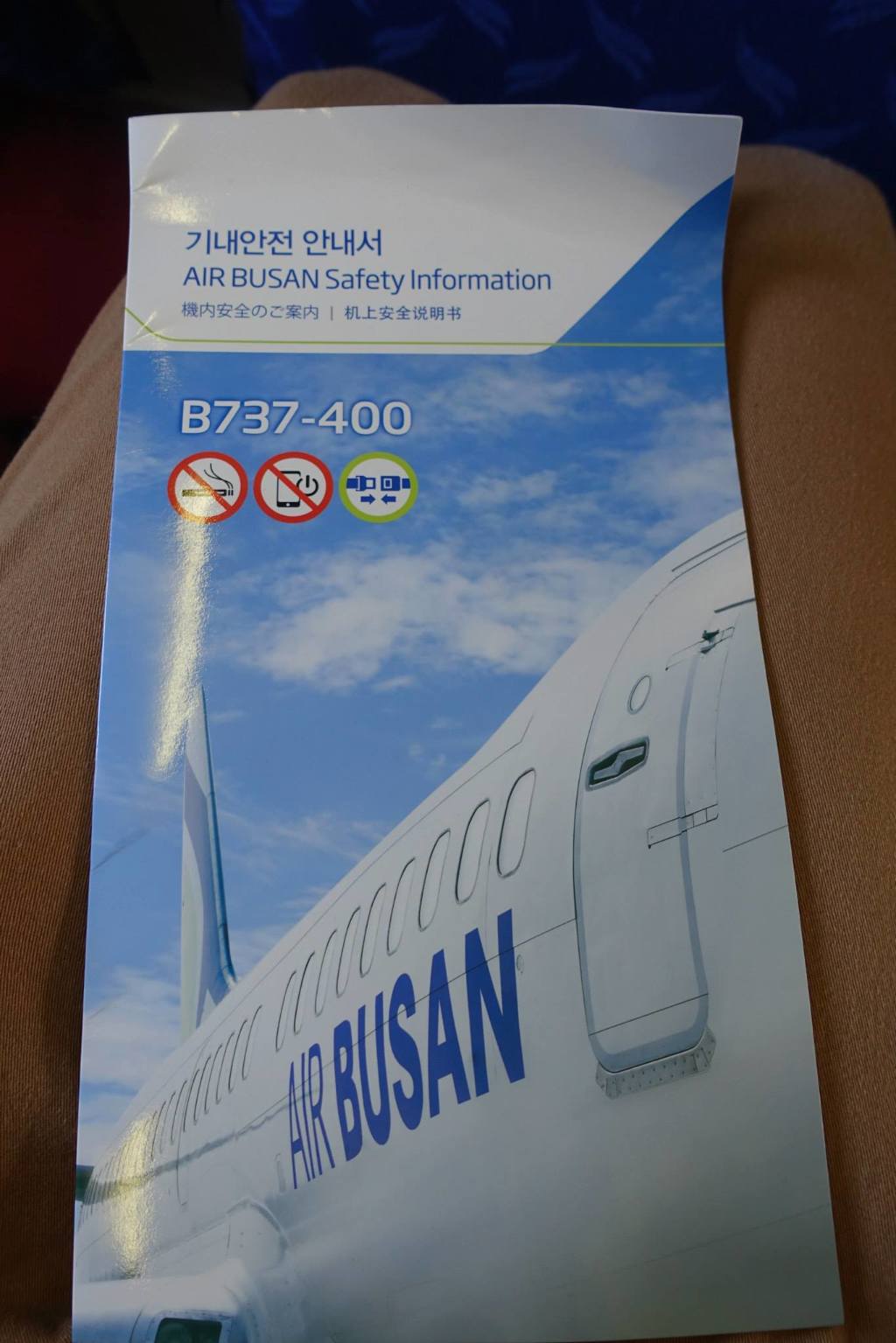
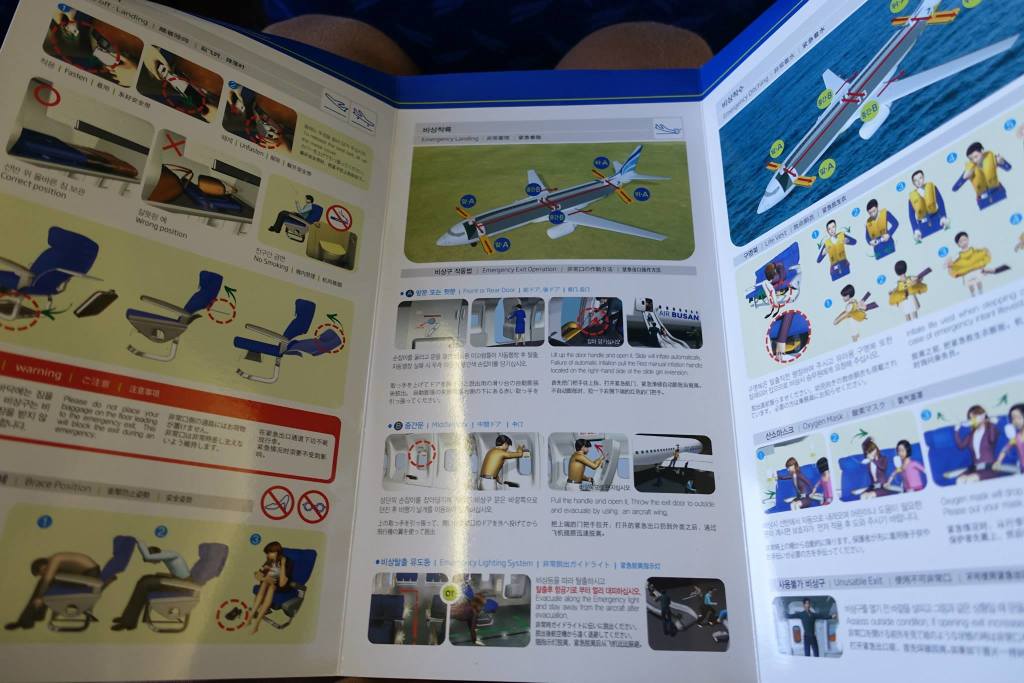
And the additional safety information for passengers seated at the exit rows.
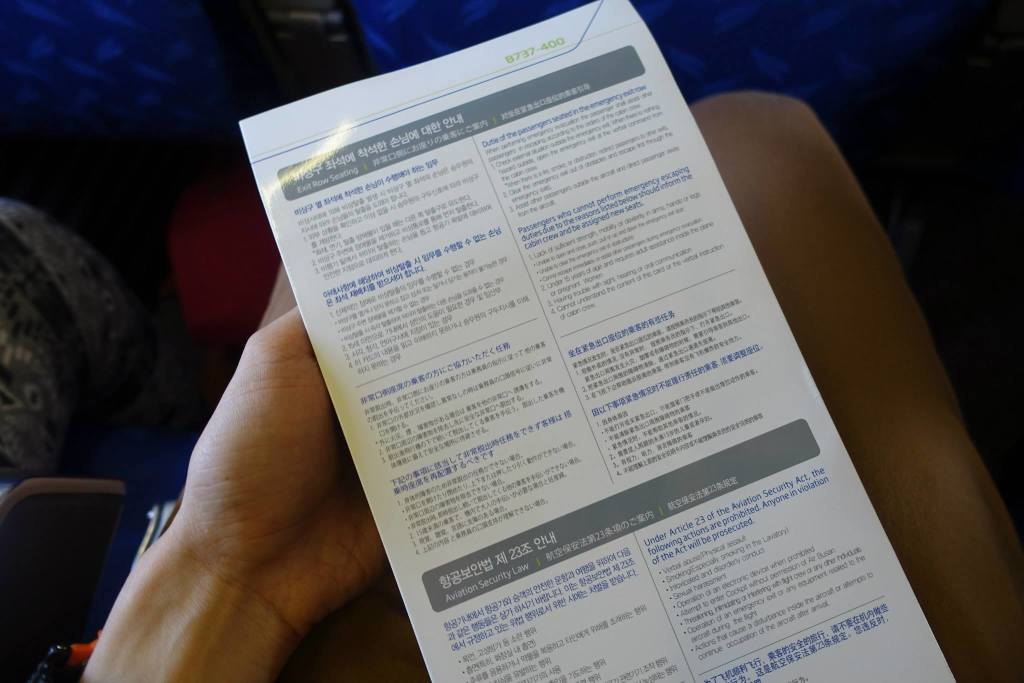
In flight magazine and duty free catalogue.
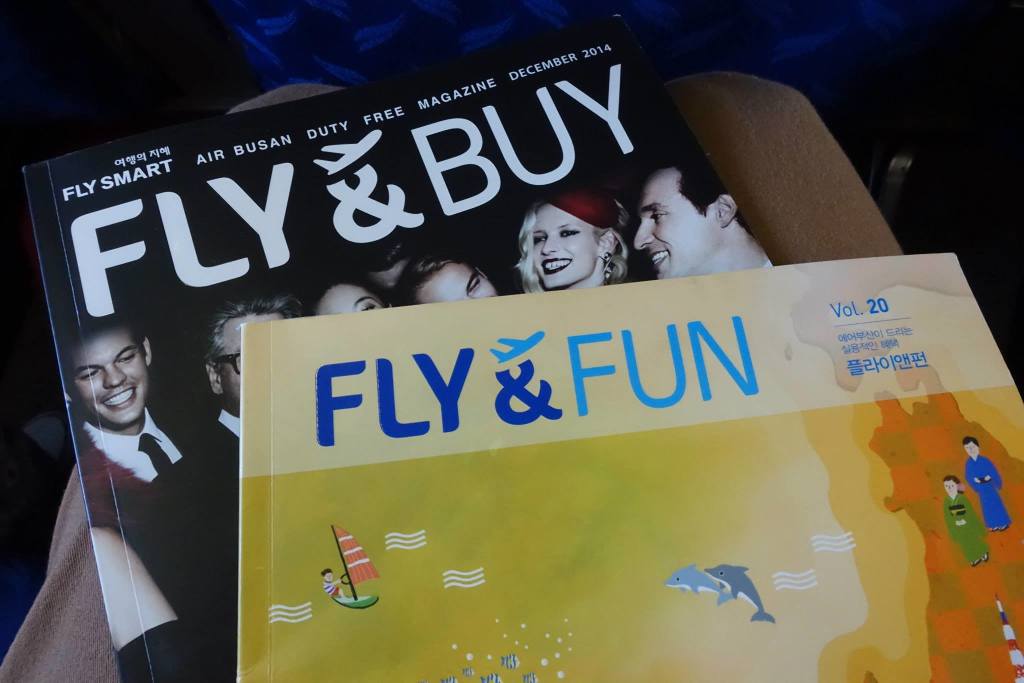
Some of the airline souvenirs available in the duty free catalogue.
There were no duty free sales on this domestic sector, though.
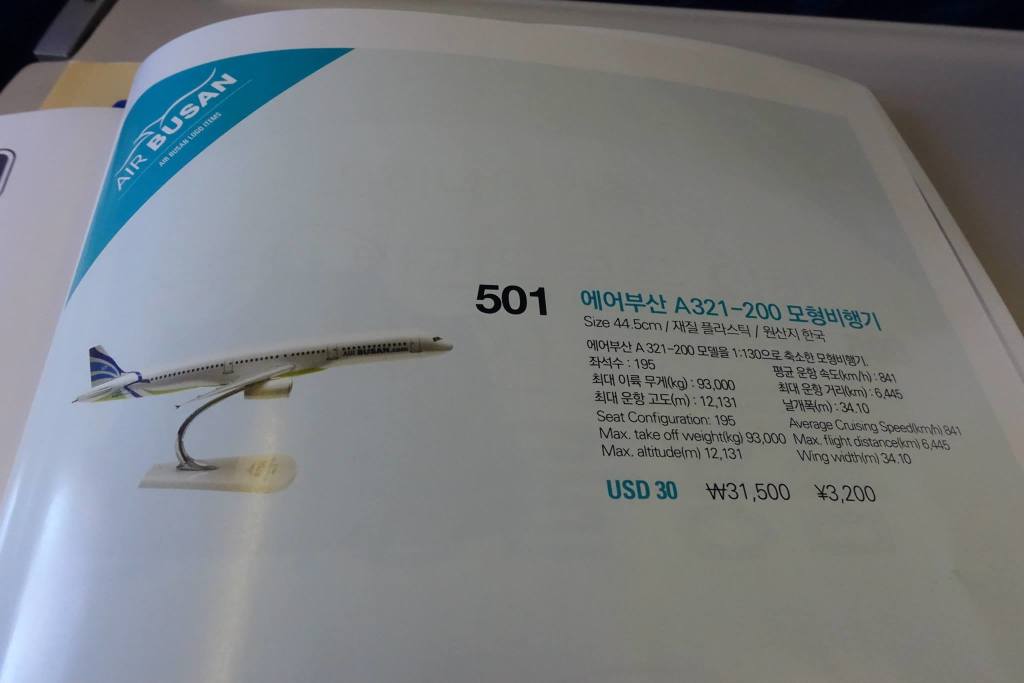

Most of the magazine contents were in Korean, in this report let's just look at the aviation related contents.
"Fly & Stamp" is actually Air Busan's frequent flyer programme. The way it works differs a lot of the traditional mileage accrual model. It basically rewards members with stamps for each BX sector flown. The number of stamps awarded depends on the distance of each sector.
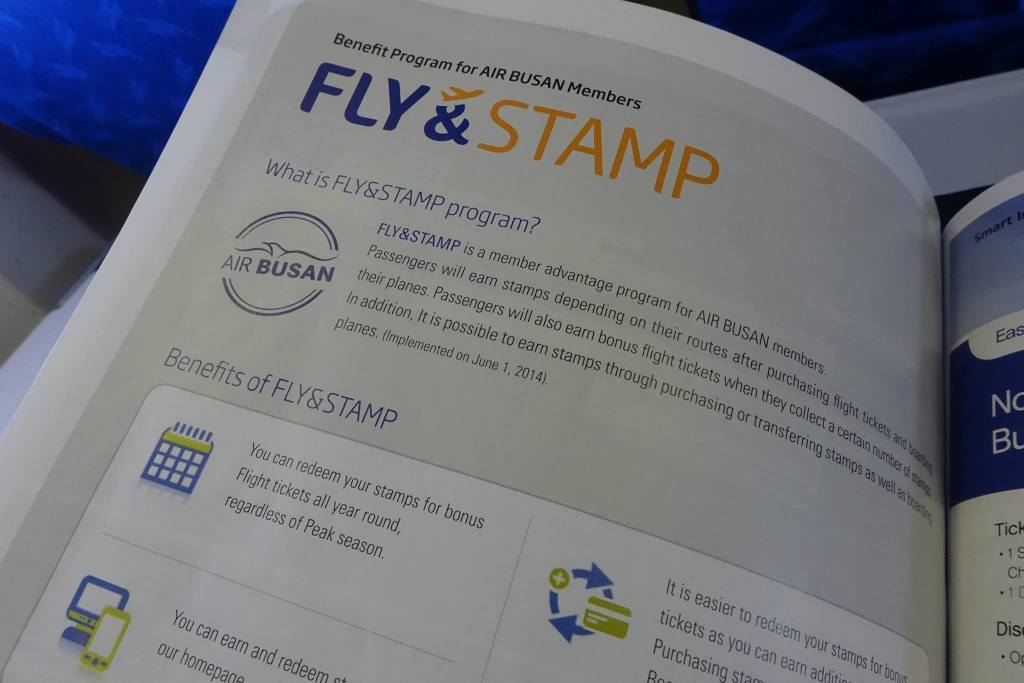
Air Busan's international destinations within Asia. (Correct as at Dec 2014) The longest sector was from Busan to Siem Reap; a flight which would take about 5h one way.
.jpg)
The domestic network was very simple, with just three destinations; Busan, Seoul and Jeju.


There was an interesting section teaching passengers how to fill in the arrival cards of various countries.
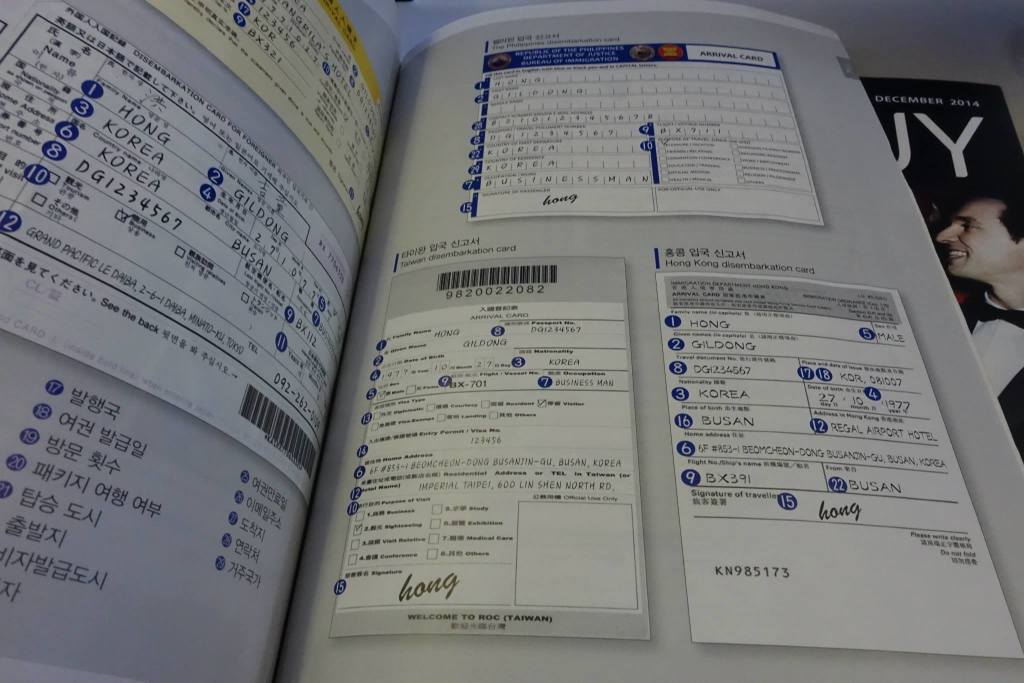
And there were also lots of detailed information about Busan's public transportation to and fro Busan Gimhae Airport.
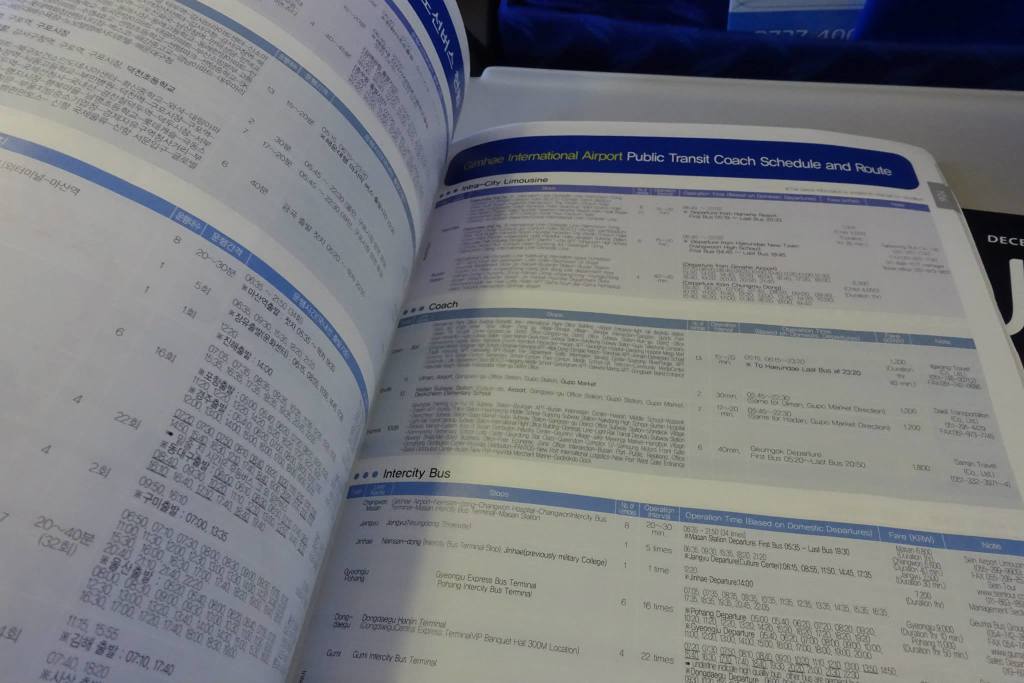
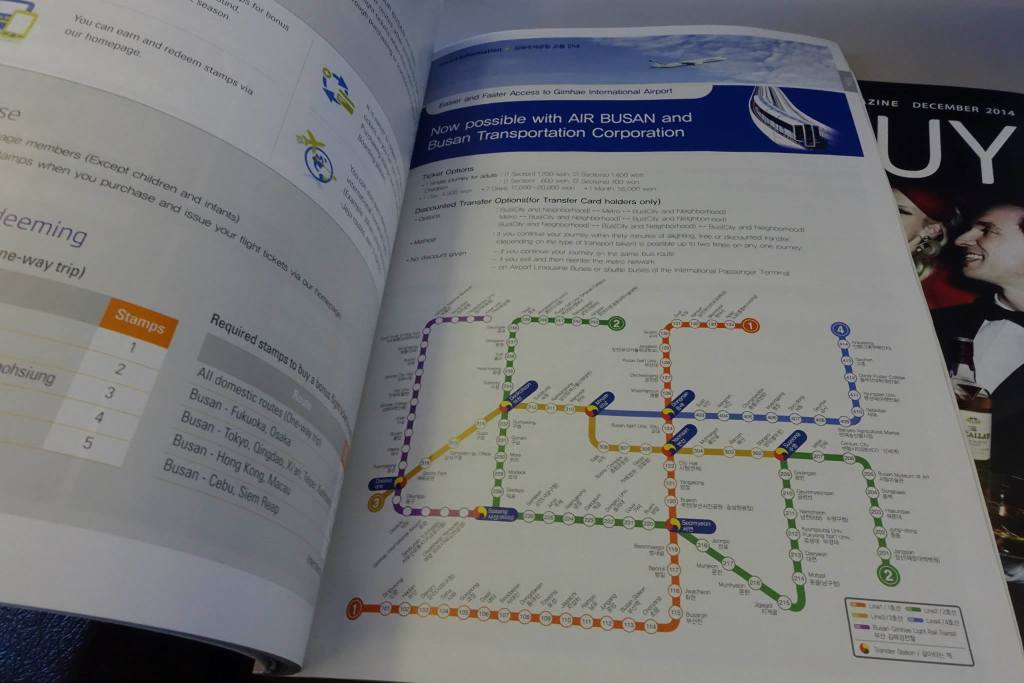
Another look out of the window before we commenced our descent.
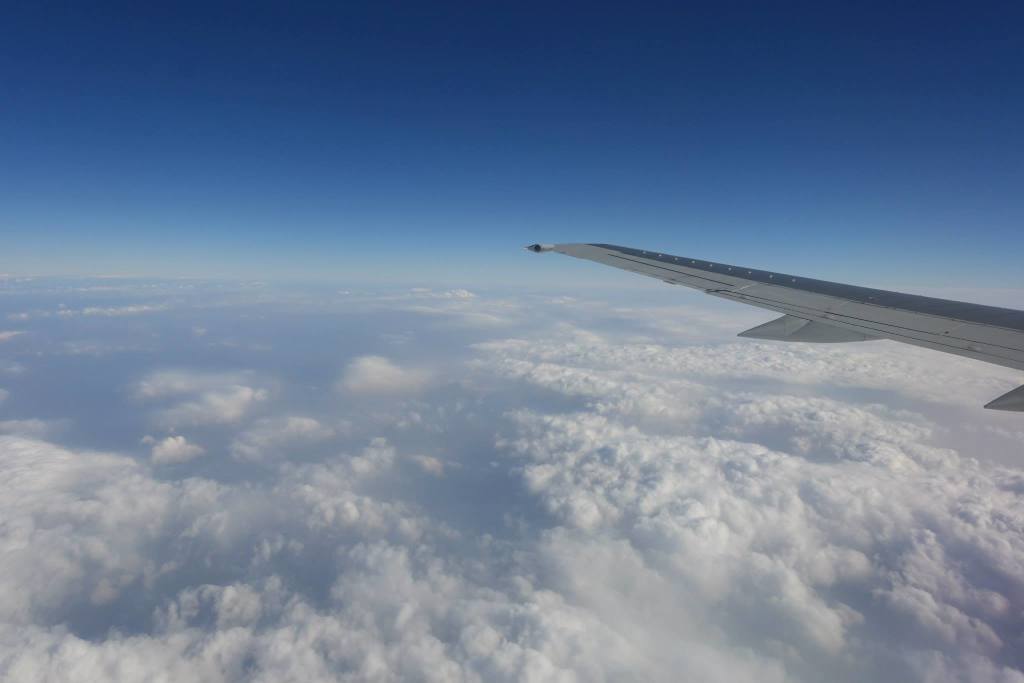

12.14pm, the FAs began to collect trash and prepare the cabin for landing.
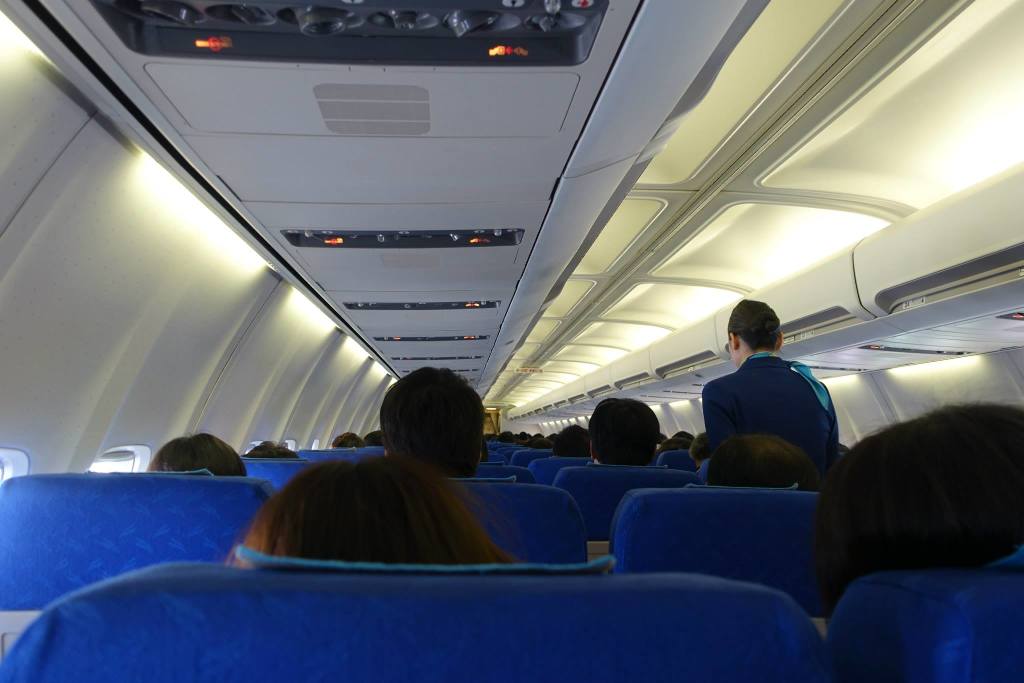
Descending through the thick cloud covers.
.jpg)
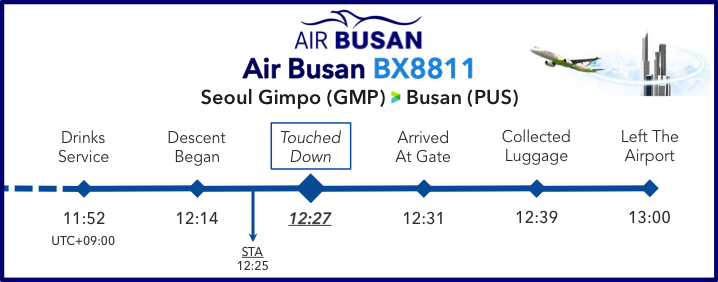
Soon after landing, the FA informed us that we could start using our mobile devices. I tried tracking our flight on FR24 to see if I could see it taxiing to the gate in Busan. But there were no data on FR24.
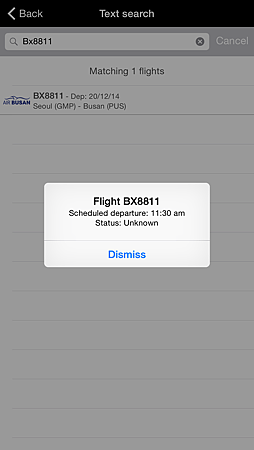
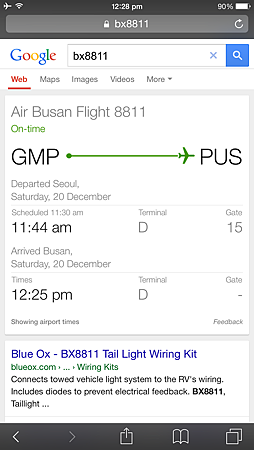
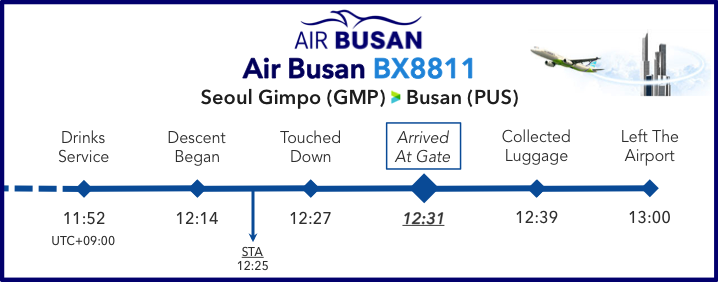
PUS is a small airport, thus our taxi to the gate took just about 5 minutes.
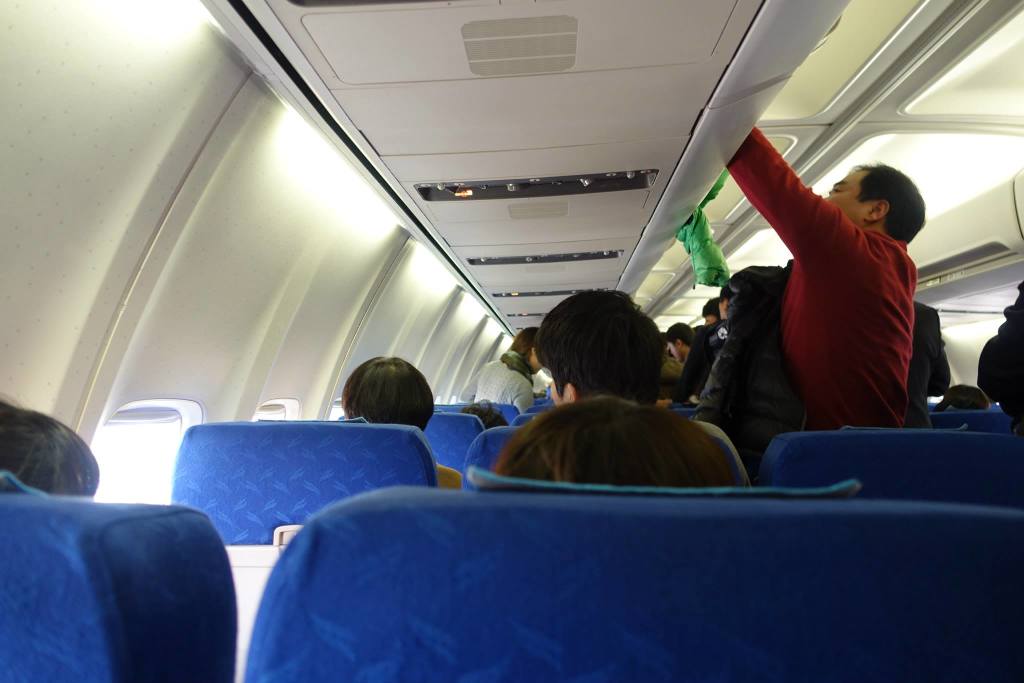
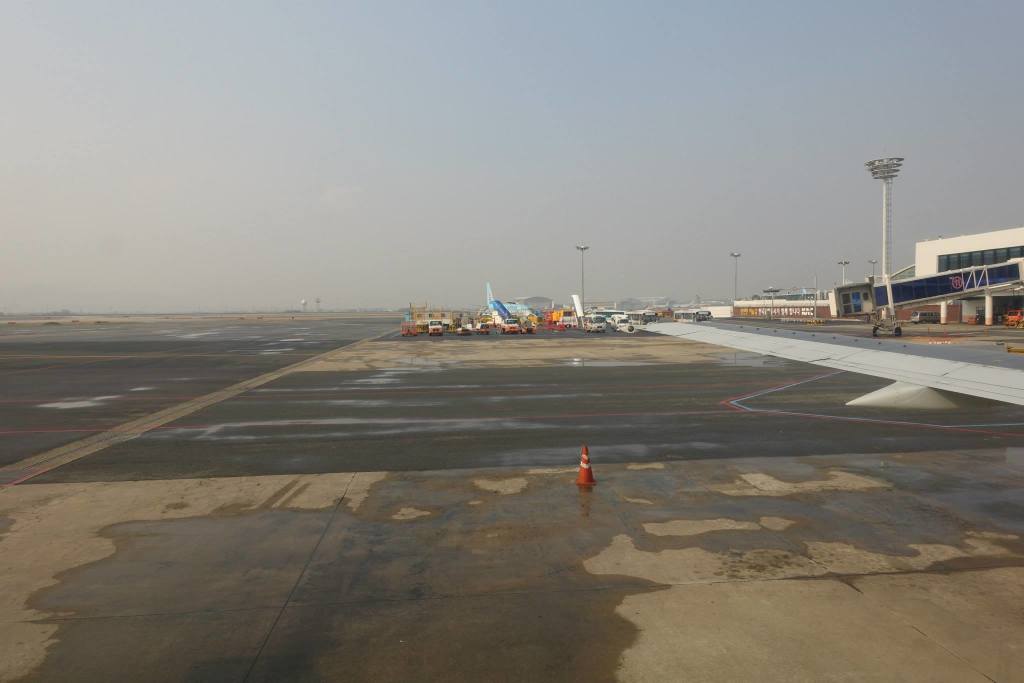
Leaving the aircraft.
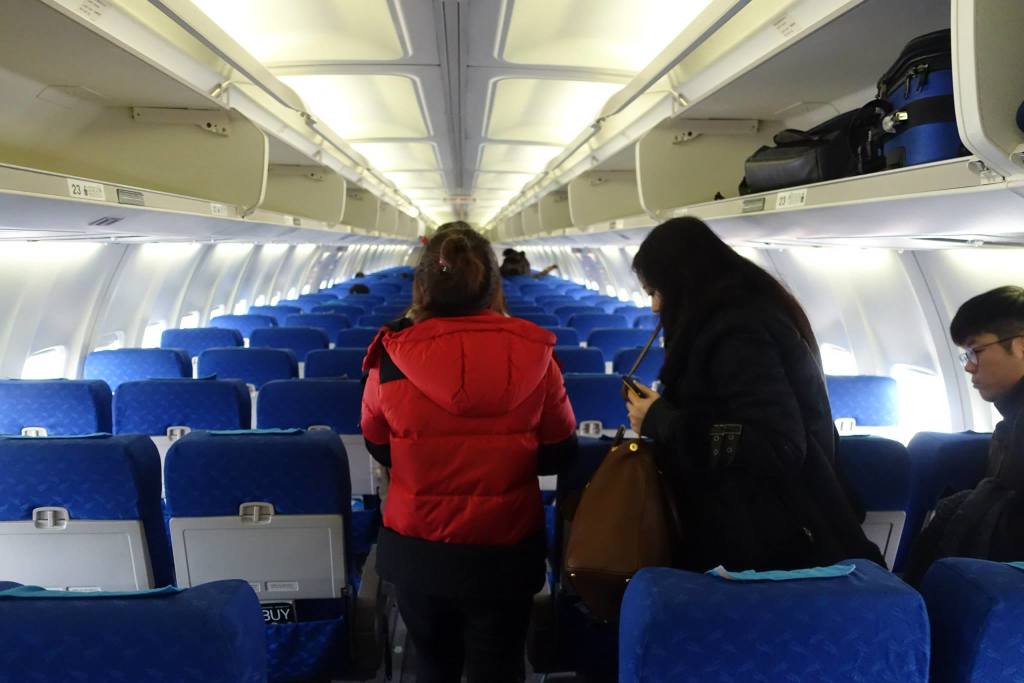
Entered the terminal building and followed the signs to the arrival hall.
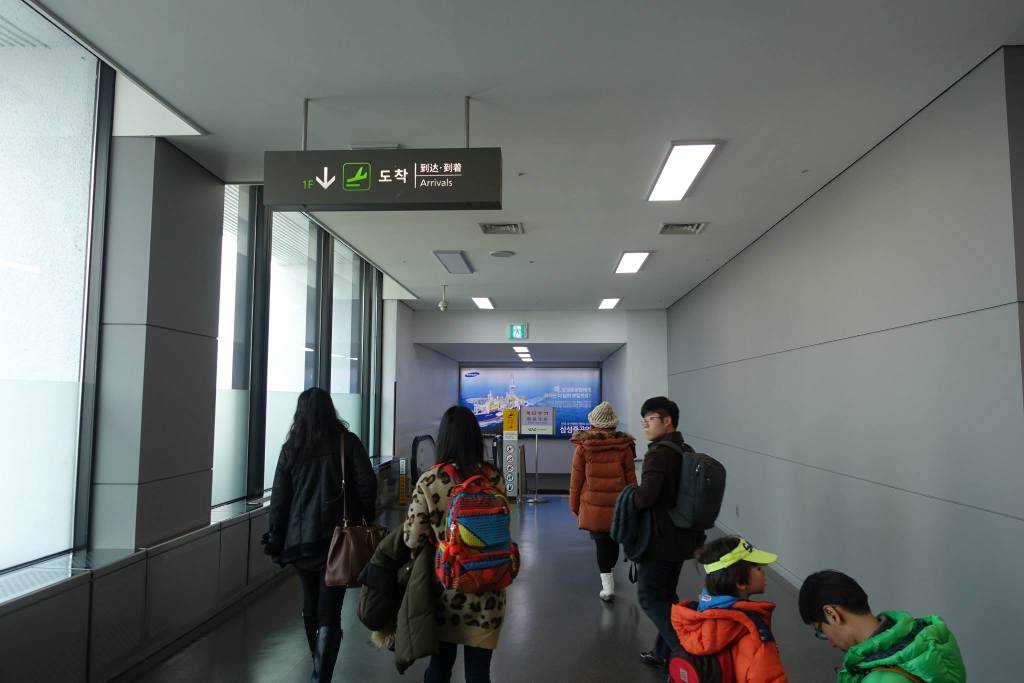
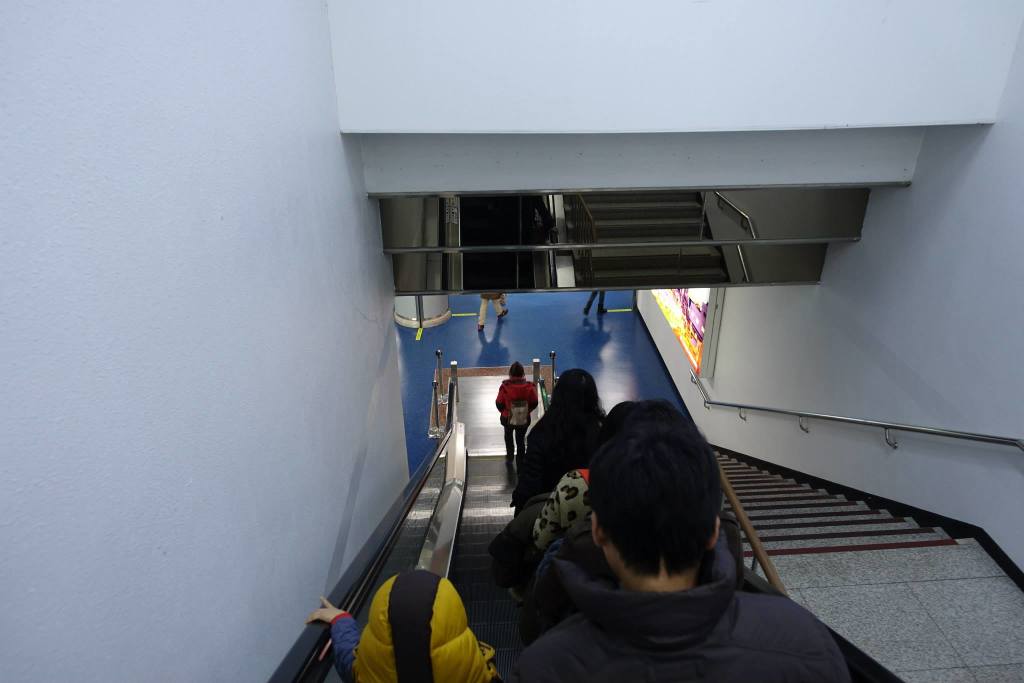
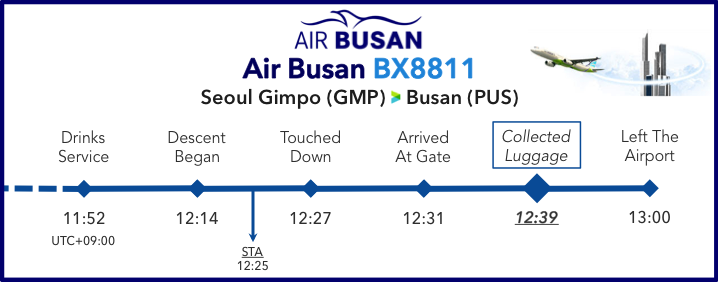
There seemed to be quite a considerable amount of checked luggage on this flight.
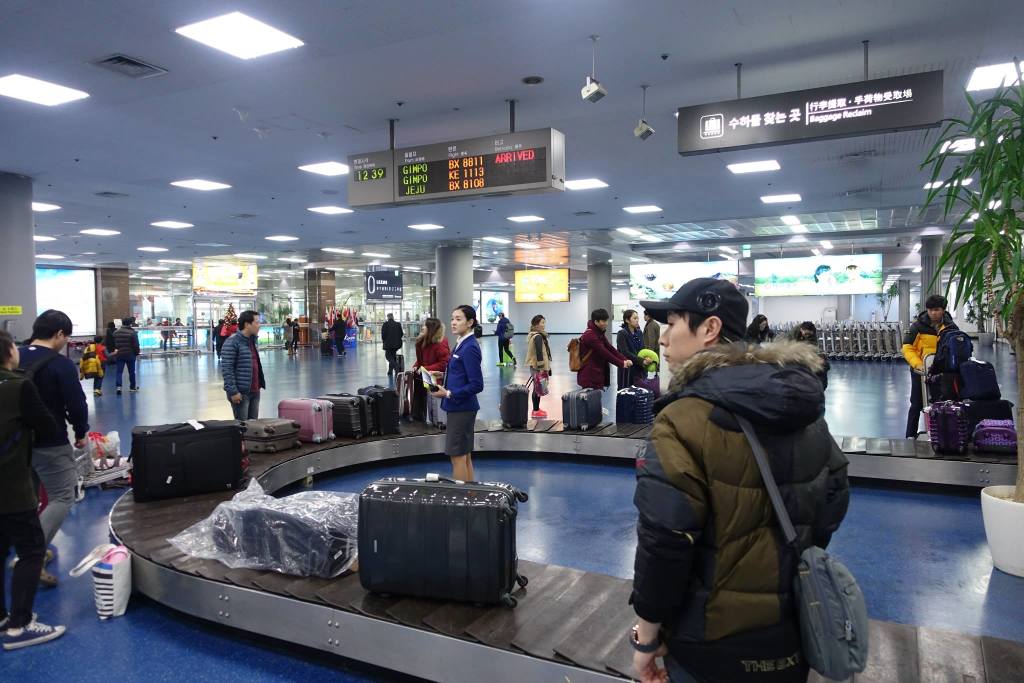
However, all bags were collected in merely 3 minutes and the baggage carousel area was soon deserted.

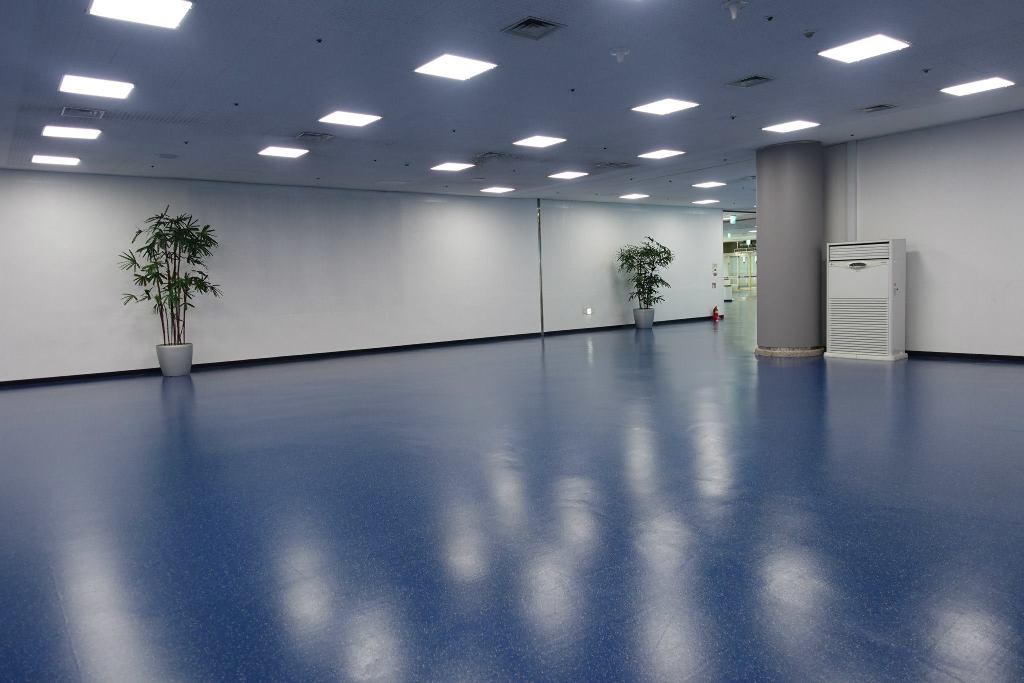
It was interesting to see the baggage tag in Korean. "부산" means Busan.
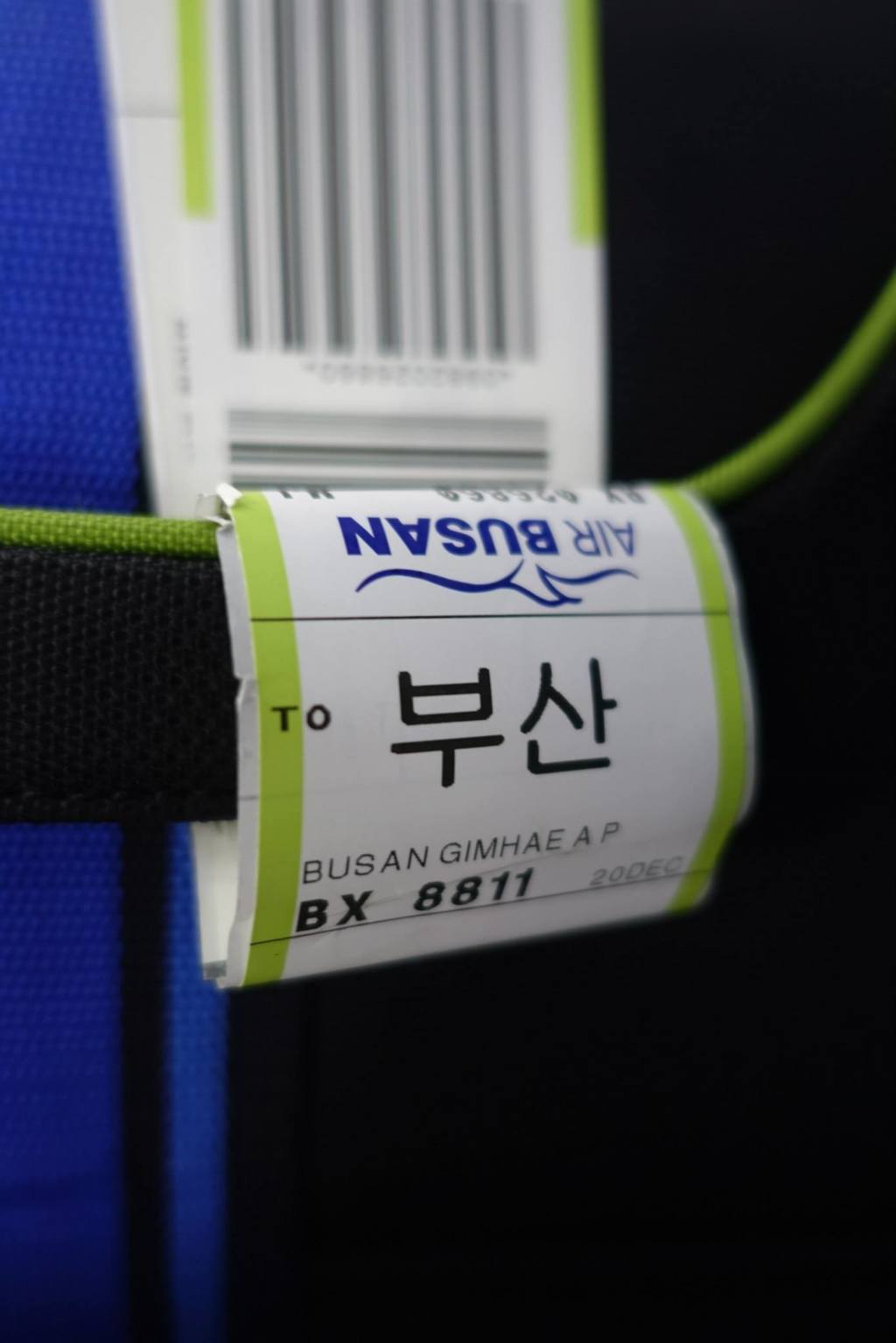
We stepped into the public area at about 12.46pm and went straight to the bus station.
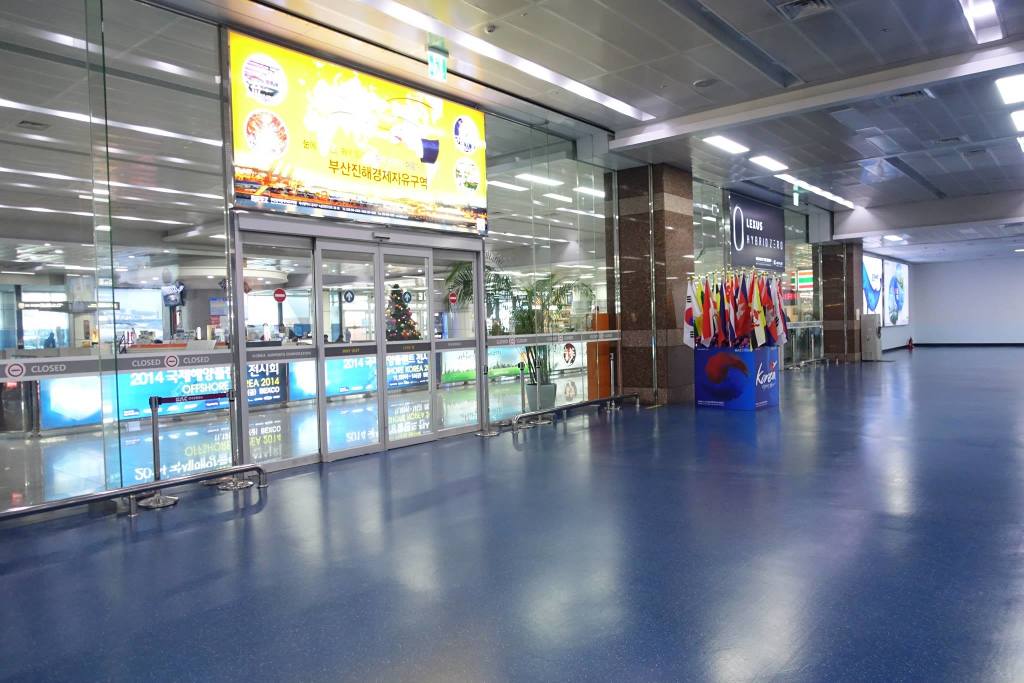

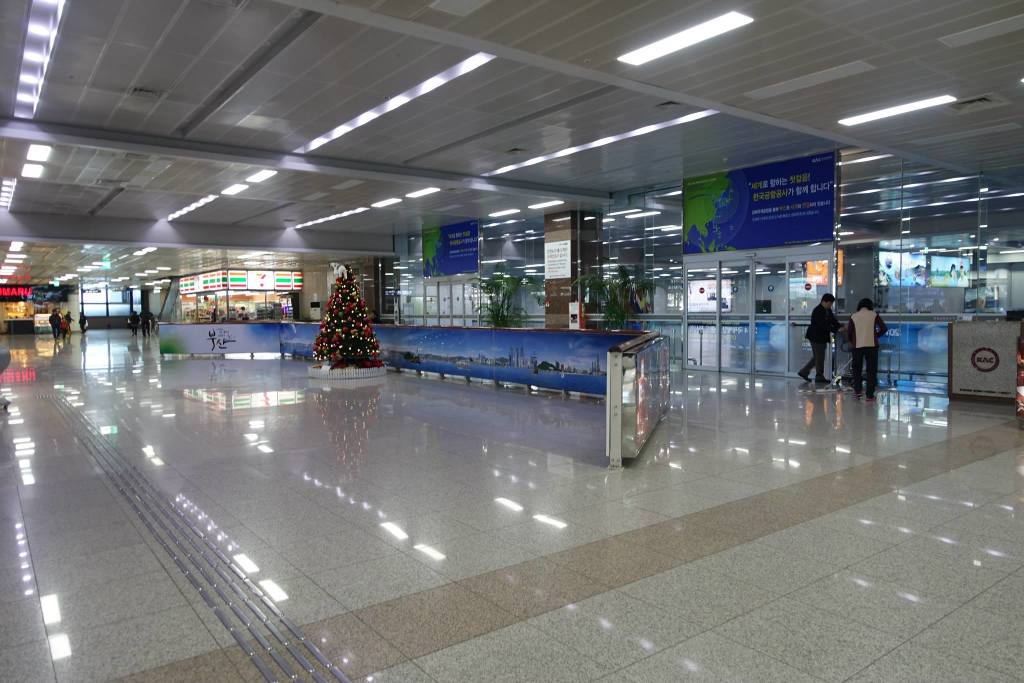
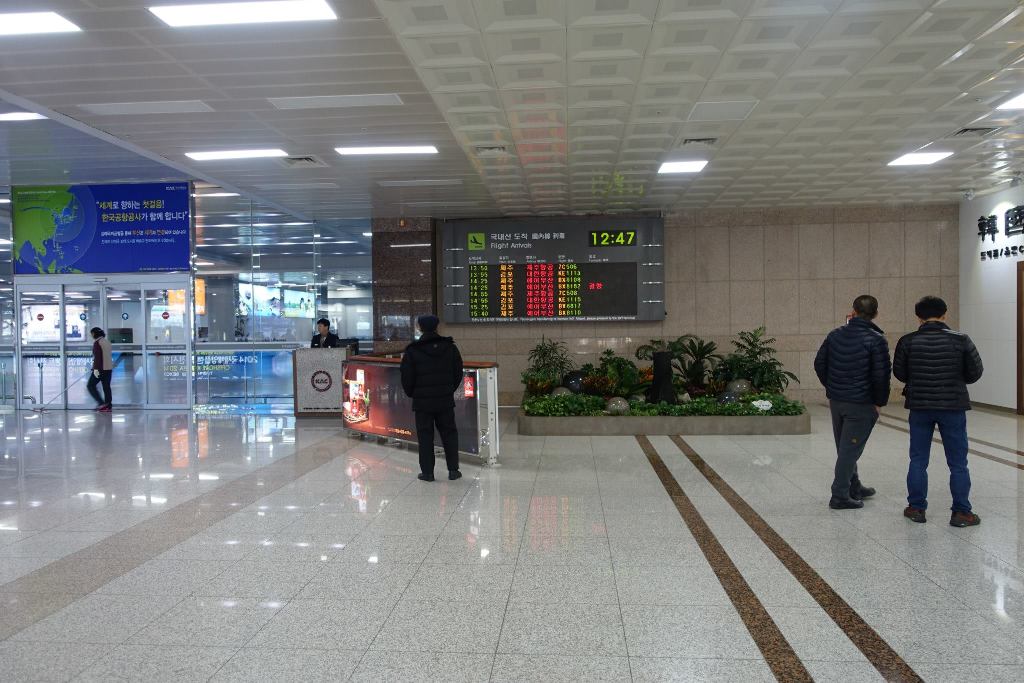
It was slightly warmer in Busan, but still very cold!

Bought our tickets at the limousine bus counters.
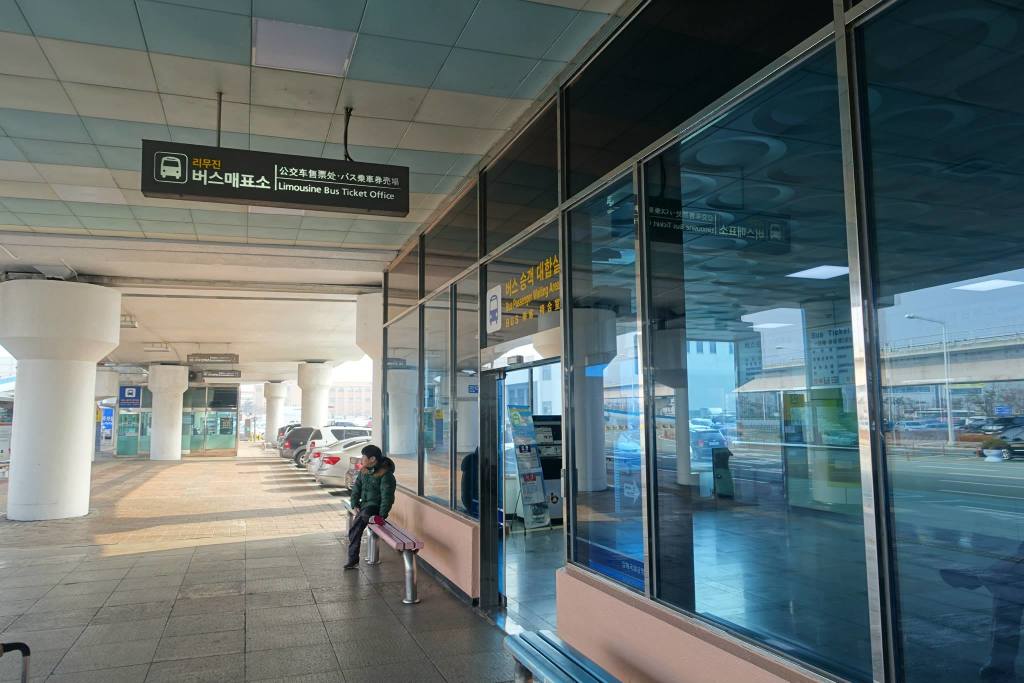
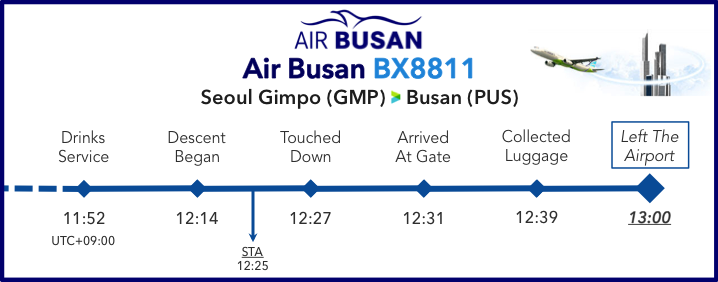
Half an hour after BX8811 touched down, we were already on our way to Busan city.
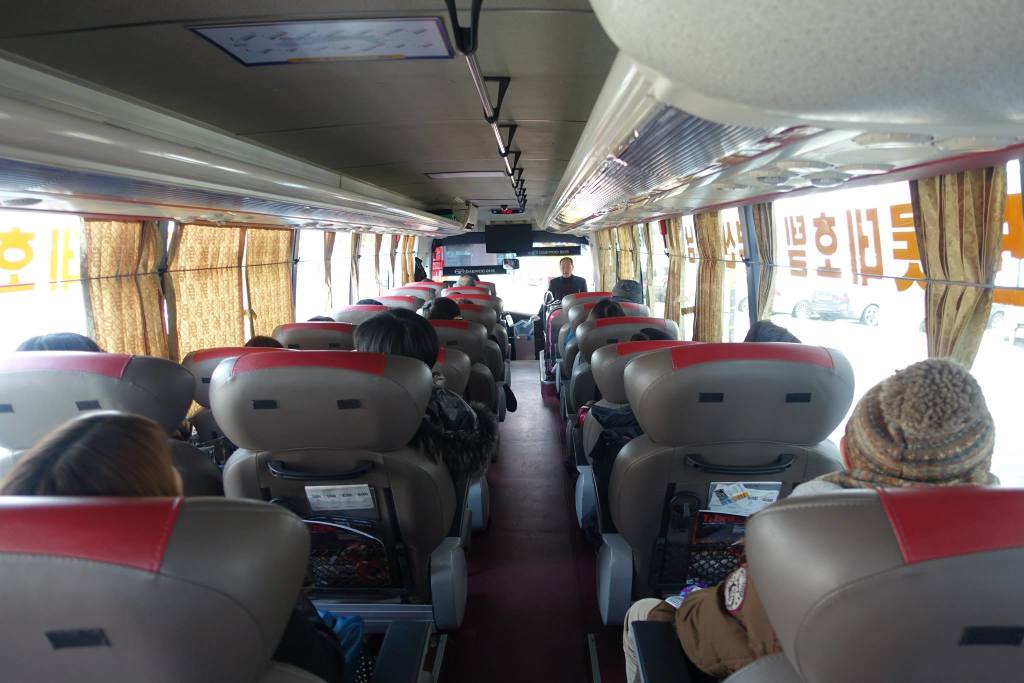
The one way bus ticket was about USD5.

And the bus seats were very comfortable.
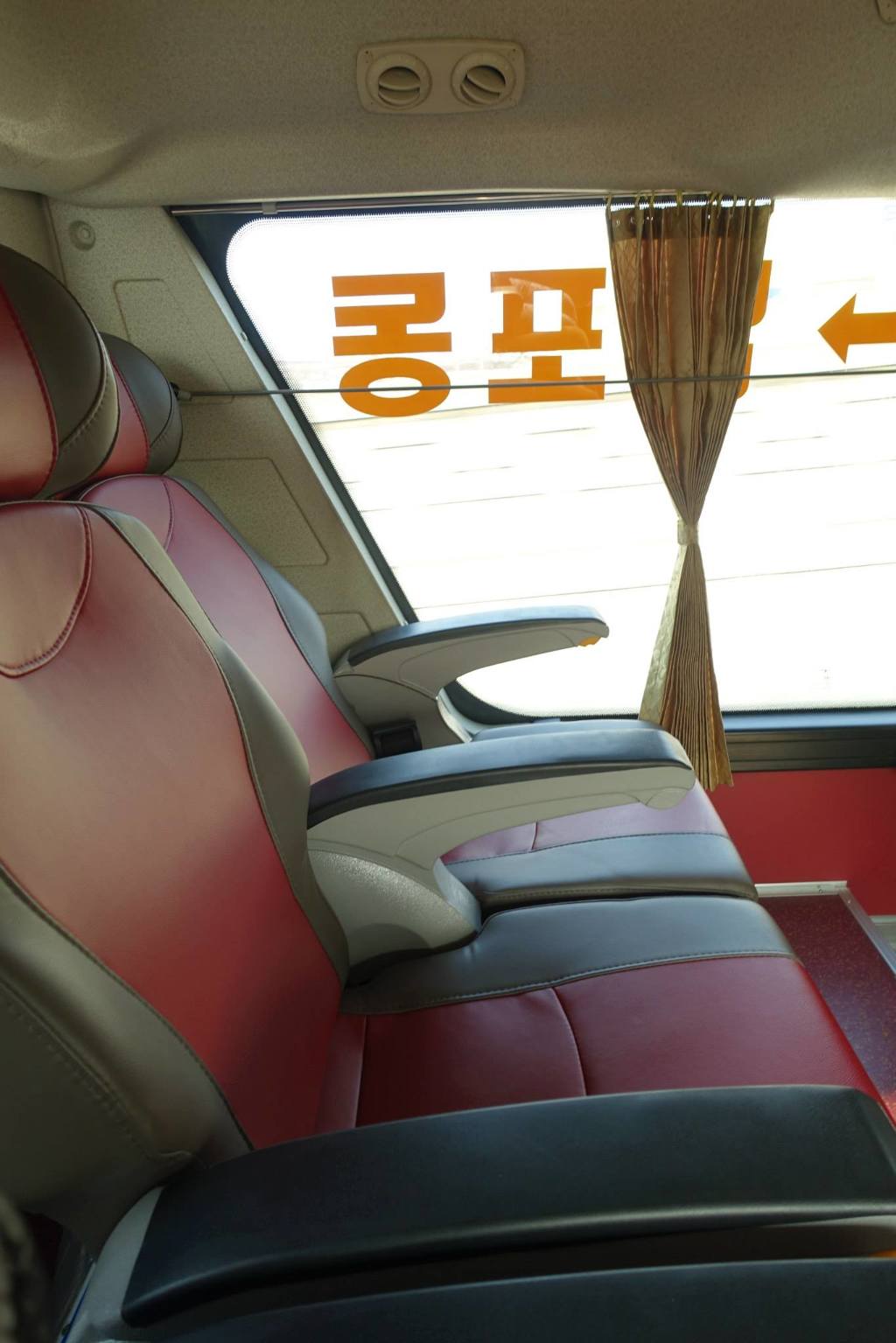
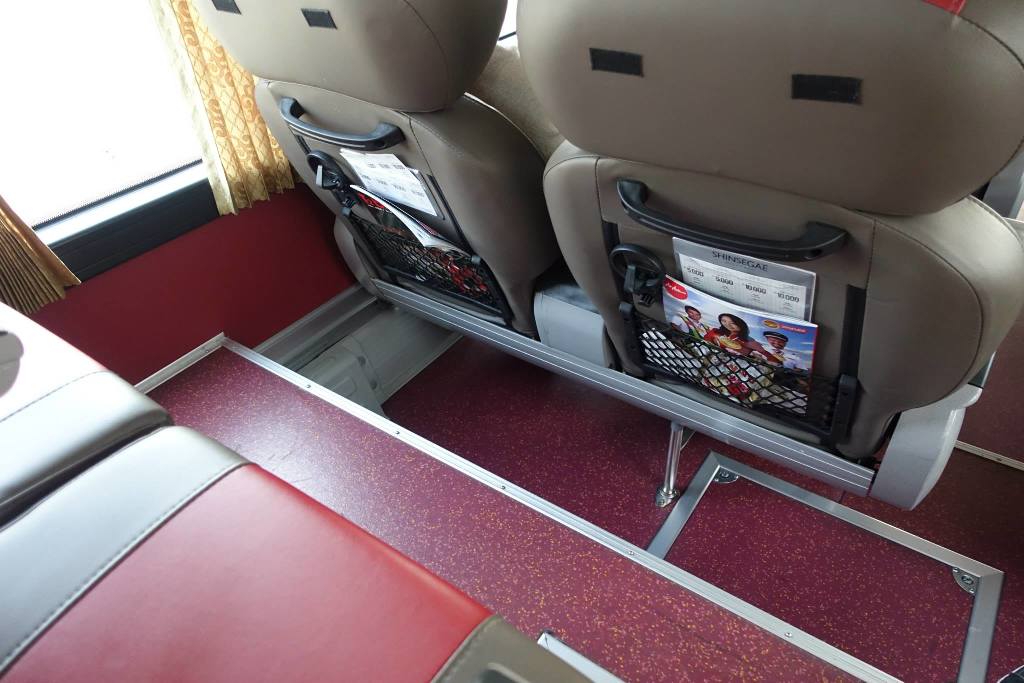
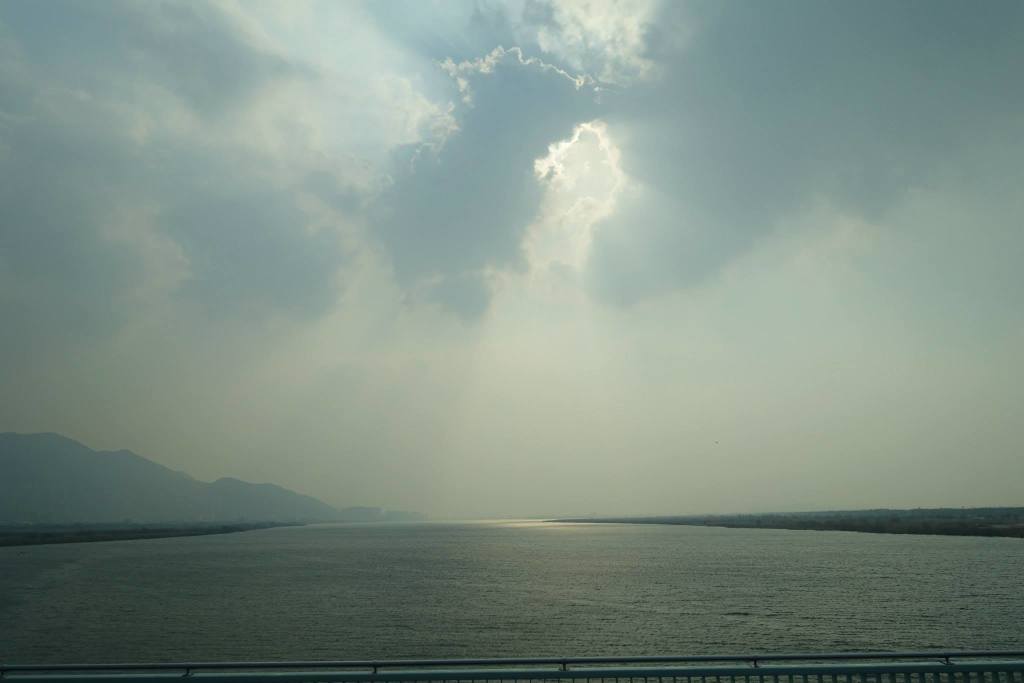
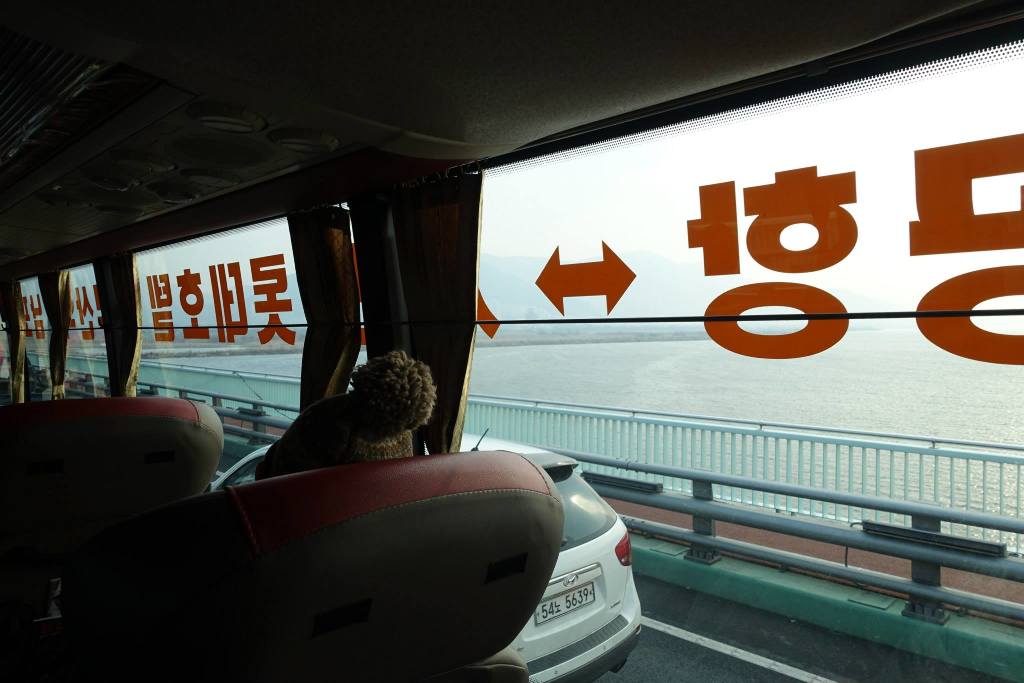
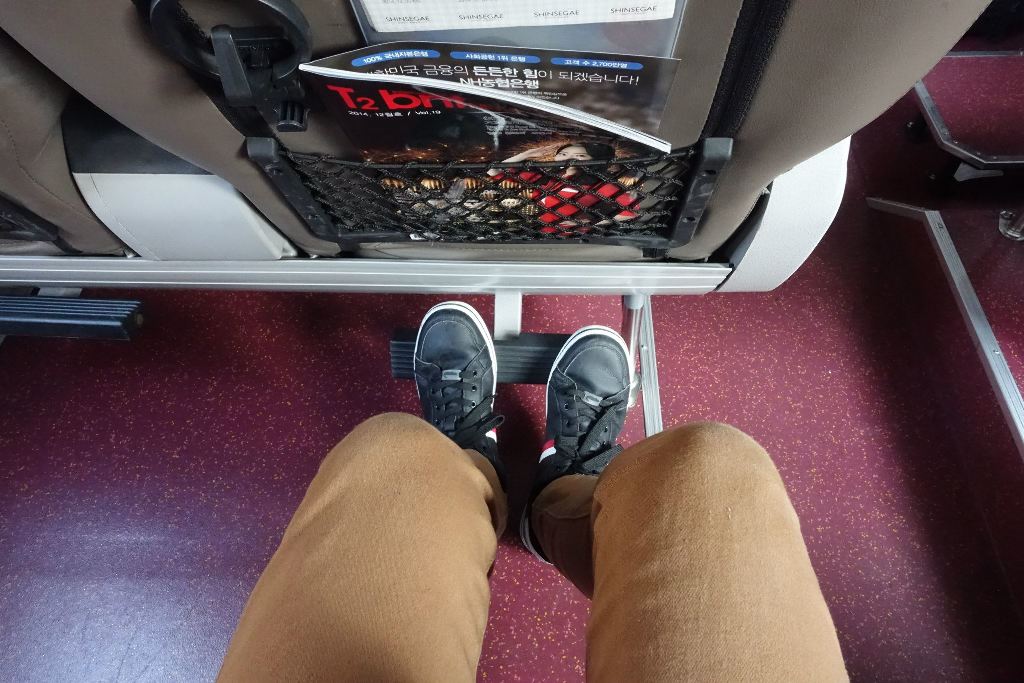
The city's traffic was however quite chaotic and towards the end of the ride we got a little giddy and frustrated with how the driver was slamming on his brakes every few seconds.
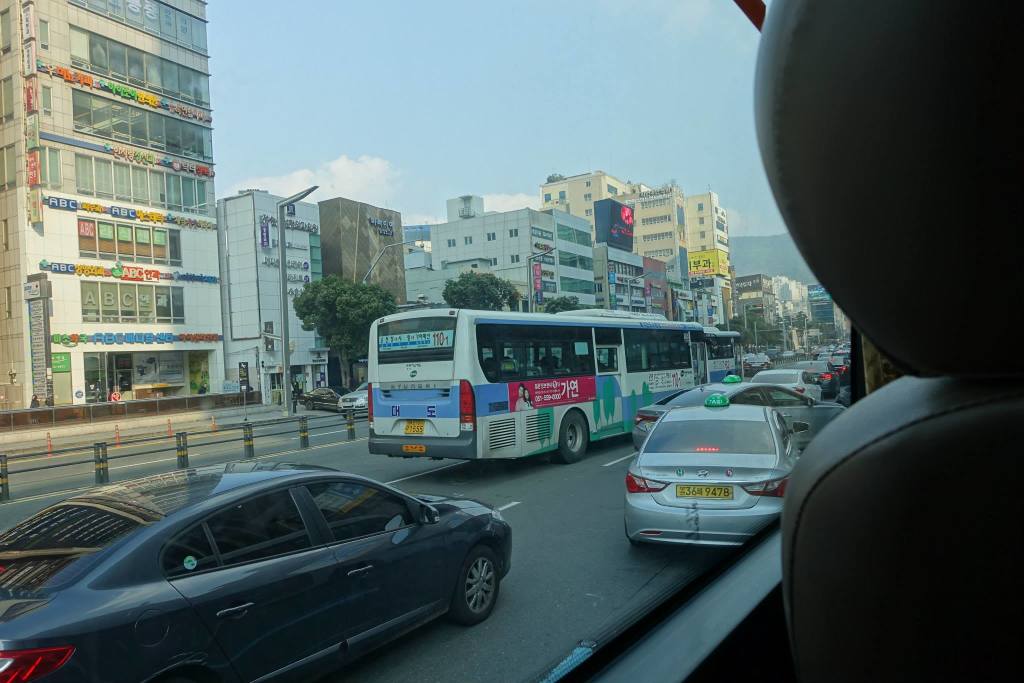
We were glad to be off the bus slightly after 2pm. It was time for some good food in Busan!
That's all for now. I will come back with the return trip very soon. Diligently catching up with all my flight reports recently, I'm keen to write a report for every single flight I've flown since 2014 but that will definitely take quite a while to accomplish.
Till then. Merci!
(To be continued)
This report was completed on 11 February 2016.
Originally posted in Traditional Chinese on http://tn92.pixnet.net/blog/post/299330249.
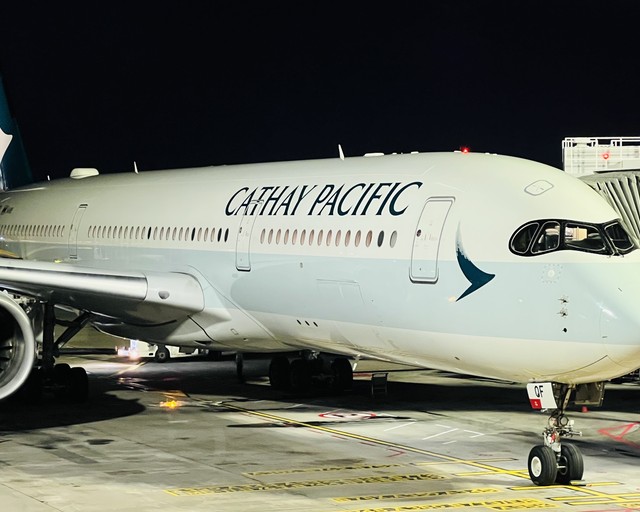
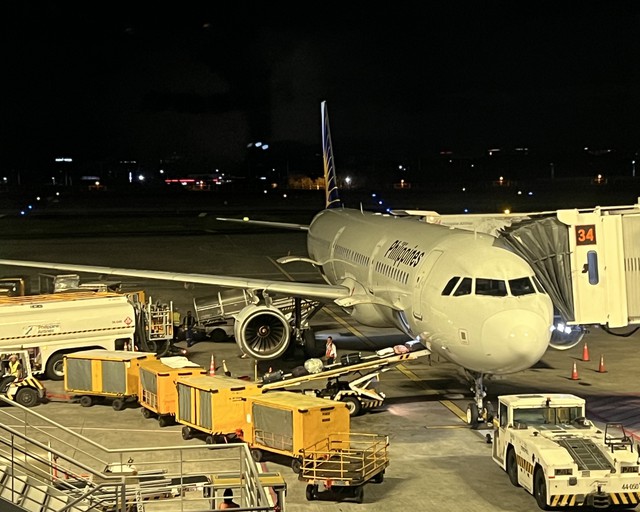

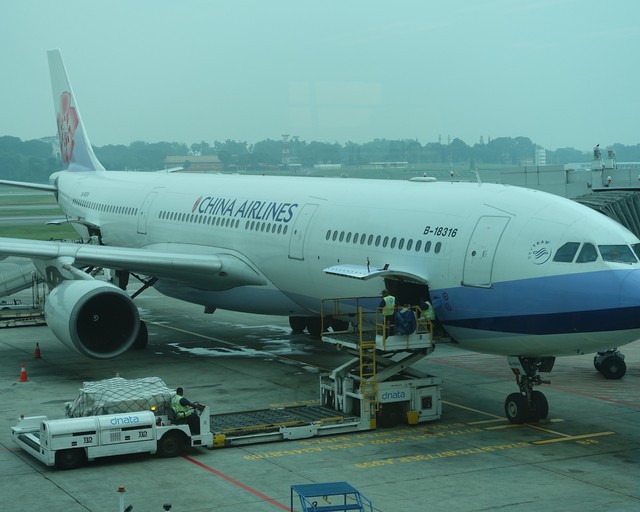
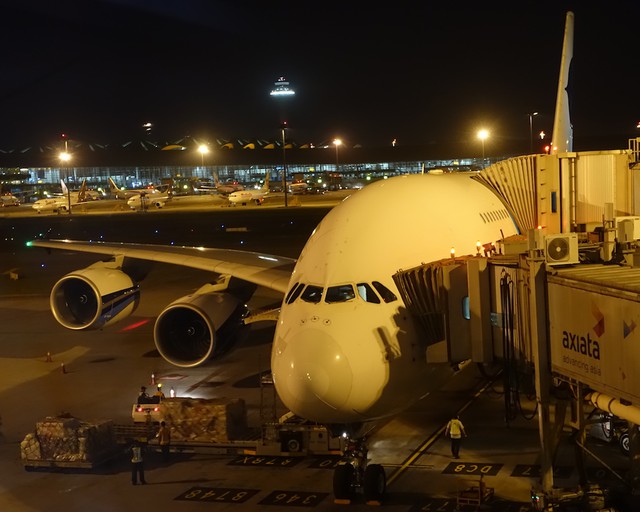
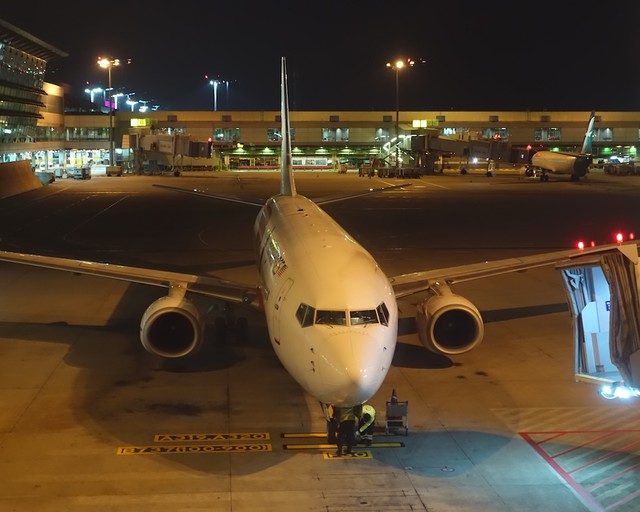

10 flights in an hour to Jeju ! that is a case where twin aisle aircraft would be justified, instead of so many single aisle ones.
I had never noticed the squarish windows of the older 737s.
Too bad they do not list the scale of the plane model in the in-flight magazine (1/100, in case other readers wonder).
I like the luggage tag in Hangul; that is really the sign of a domestic flight !
Thanks for sharing this comprehensive report in English !
Hi Marathon! Thanks for your comment!
10 flights in an hour to Jeju ! that is a case where twin aisle aircraft would be justified, instead of so many single aisle ones.
Too bad they do not list the scale of the plane model in the in-flight magazine (1/100, in case other readers wonder).
I like the luggage tag in Hangul; that is really the sign of a domestic flight !
Thank you!
That is a great report, thank you. I really like the timeline.
Thank you so much for your compliments! (:
Thanks for this exotic report on a little known airline! 737-400s are also quite rare these days. The seat pitch does look better than 30. Overall looks decent.
Thanks for sharing!